- You are here:

Top 12 Best Places To See Rhinos on Safari in Africa

Ariadne is an Africa expert. She and her husband form a team who author many guidebooks to African countries.
Are you wondering which are the best places to see rhinos in Africa? These prehistoric creatures once roamed over most of the continent, but poaching has taken its toll in recent decades. Today, rhinoceros are extinct in many parts of Africa, and the survivors need special protection as they are poached for their horns (which are worth a lot of money in some Asian countries).
Here are some ideas for where to see this second-bulkiest member of the Big Five .
1. Kruger National Park, South Africa
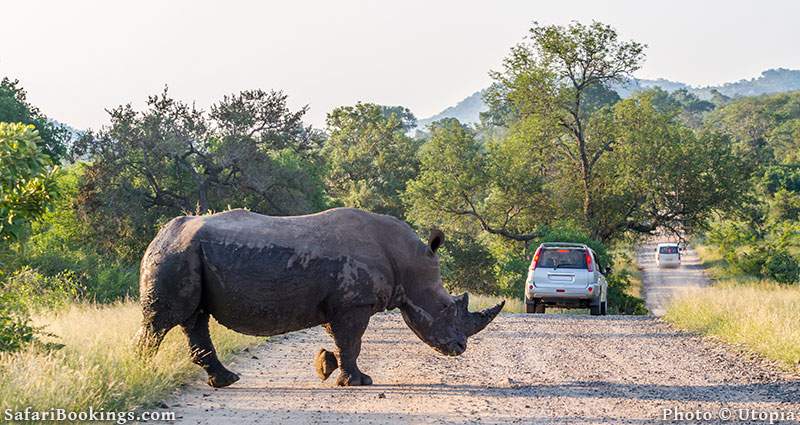
South Africa’s flagship national park, Kruger , has by far the largest population of rhinos in Africa. Southern Kruger is particularly renowned for white rhino sightings. You’ll need more luck to spot the smaller black rhino, a browser that tends to lurk unobtrusively in dense thickets.
Kruger Tours
2. Mkhaya Game Reserve, Eswatini (Swaziland)
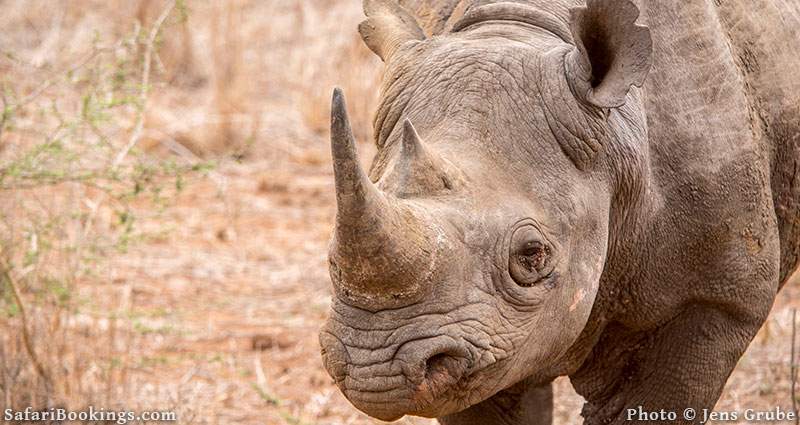
Mkhaya , in Eswatini (formerly Swaziland), is all about intimate encounters with protected species. With the expert guidance of your ranger, you’ll be able to approach both black and white rhino on foot. Both species are impressive. The white rhino is Africa’s second-largest terrestrial mammal but homing in on a black rhino – slightly smaller but more aggressive – is even more exciting.
Mkhaya Tours
3. Ngorongoro Crater, Tanzania
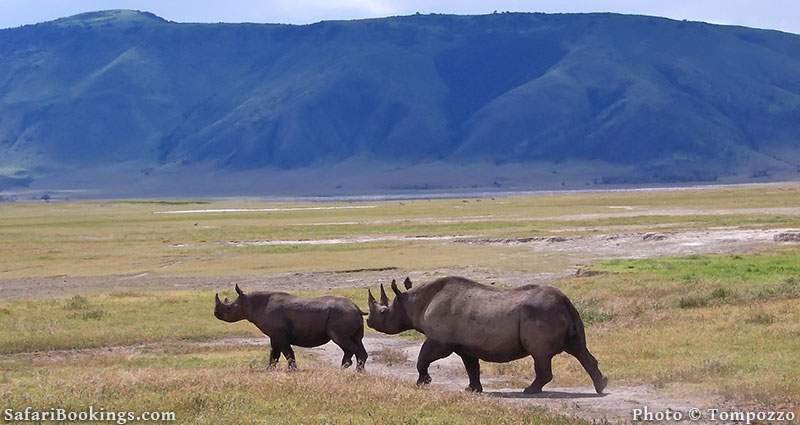
Ngorongoro is the most reliable place in Tanzania to see rhinos. A healthy and unusually relaxed black rhino population spends much of the day in open grassland and is easily spotted there. If you miss the rhinos on the plains, try your luck in the late afternoon at the picturesque Lerai Forest, where they usually retreat before nightfall.
Ngorongoro Crater Tours
4. Ziwa Rhino & Wildlife Ranch, Uganda
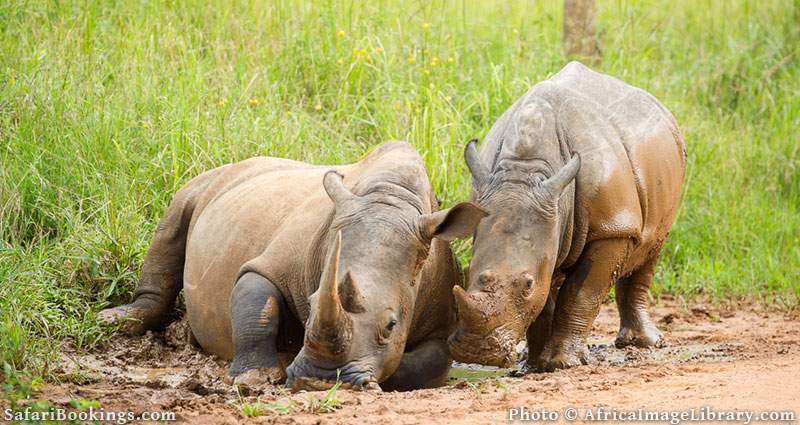
Ziwa Rhino and Wildlife Ranch is home to Uganda’s only rhinos. Here you get the opportunity to track white rhinos on foot. Your experienced guide will keep you safe while you approach these magnificent beasts downwind. Don’t forget to take photos (or to breathe – you’ll get to appreciate what a 2-ton animal really looks like) while your adrenaline is pumping.
Ziwa Rhino Tours
5. Ol Pejeta Conservancy, Kenya
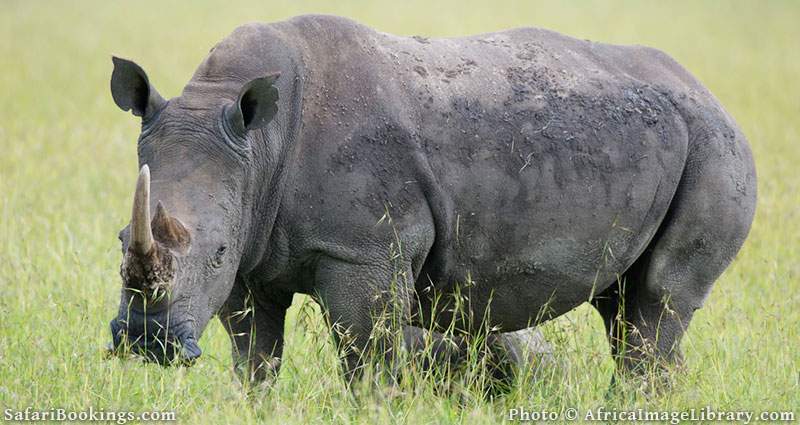
Ol Pejeta , on the Laikipia Plateau below Mt Kenya, is a great place to see both southern white rhino (introduced from South Africa) and the endangered black rhino. It is also home to the last remaining northern white rhinos in Africa, a pair of cows kept safe in a large enclosure. The survival of this near-extinct subspecies, which once roamed freely in East and Central Africa, will depend on the success of current trials of in vitro fertilization techniques and stem cell technology.
Ol Pejeta Tours
6. Lake Nakuru National Park, Kenya
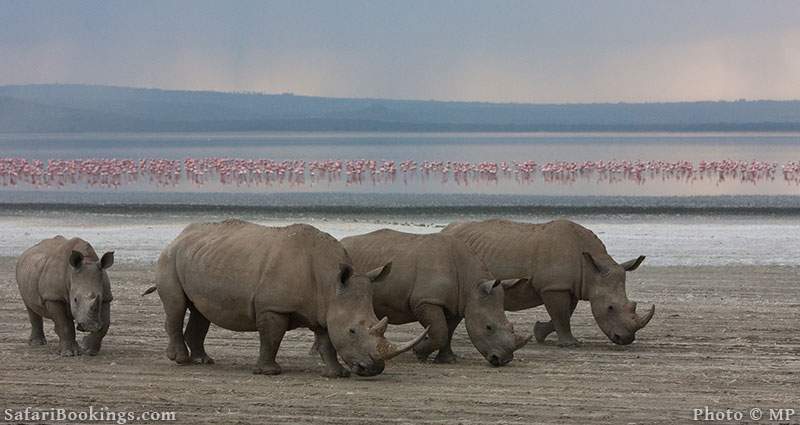
Lake Nakuru , towered over by the escarpment and hemmed in by yellow fever trees, is a scenic highlight of Kenya’s Rift Valley. It’s a gorgeous setting for seeing white rhinos, and your chances are pretty good, even on a one-night stay. For atmospheric pictures, head out early to find them grazing on the lakeshore in the rising mist. Black rhinos live here too, but sightings are hit-and-miss.
Lake Nakuru Tours
7. Nairobi National Park, Kenya

Right alongside Kenya’s capital city, Nairobi National Park has healthy populations of both black and white rhinos. Although there are more of the former present in the park, white rhinos are easily seen throughout daylight hours. Sunset and the very early morning offer the best chances to see black rhinos as they emerge from (or return to) the dense vegetation that runs along some of the park’s rivers and valleys.
Nairobi NP Tours
8. Hluhluwe-iMfolozi Game Reserve, South Africa

Hluhluwe-iMfolozi is the oldest game reserve in South Africa. It was established in the 1890s as a sanctuary for what was then the country’s last remaining population of southern white rhino. It is where rhino conservation began and where this incredible creature was narrowly saved from extinction. Today, both black and white rhino are common, although the former is easy to miss in the dense vegetation.
Hluhluwe-iMfolozi Tours
9. Kwandwe Game Reserve, South Africa

Kwandwe is an exclusive private game reserve in South Africa’s Eastern Cape and has only 26 rooms in a vast wilderness area. It offers superb wildlife viewing of all the Big Five (lion, leopard, buffalo, elephant and rhino). The relatively open terrain and rolling hills allow for regular sightings of white rhino as well as the more elusive black rhino. While you’ll certainly get some good photo opportunities for the former, black rhinos are less cooperative – they usually run, either to flee or to charge.
Kwandwe Tours
10. Etosha National Park, Namibia

Though it is usually encountered in thick vegetation, the black rhino also thrives in the open desert environs of Namibia’s Etosha Pan. Sightings of this rare prehistoric animal are common here. Etosha is known for its incredible wildlife viewing at waterholes in the Dry season. Try the floodlit Okaukuejo waterhole at night; with patience, you might see a solitary black rhino come to drink.
Etosha Tours
11. Pongola Game Reserve, South Africa
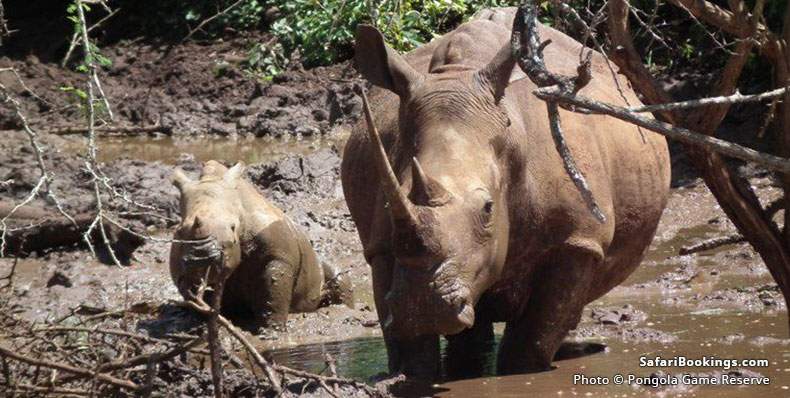
Deep in the heart of South Africa’s Zululand, on the shore of Pongolapoort Dam, lies little-known Pongola Game Reserve. You won’t get bored here as activities include game drives, boat cruises and – most exciting of all – a very authentic rhino-tracking experience. The rhinos roam around a vast tract of bush so you might be out tracking for up to three hours. But when you get up close to a rhino on foot, you’ll know it was worth it. Afternoons are best spent on the lake: the birdlife is fantastic, the crocs are enormous, and you should spot plenty more rhinos before enjoying a sundowner drink on the water.
12. Khama Rhino Sanctuary, Botswana
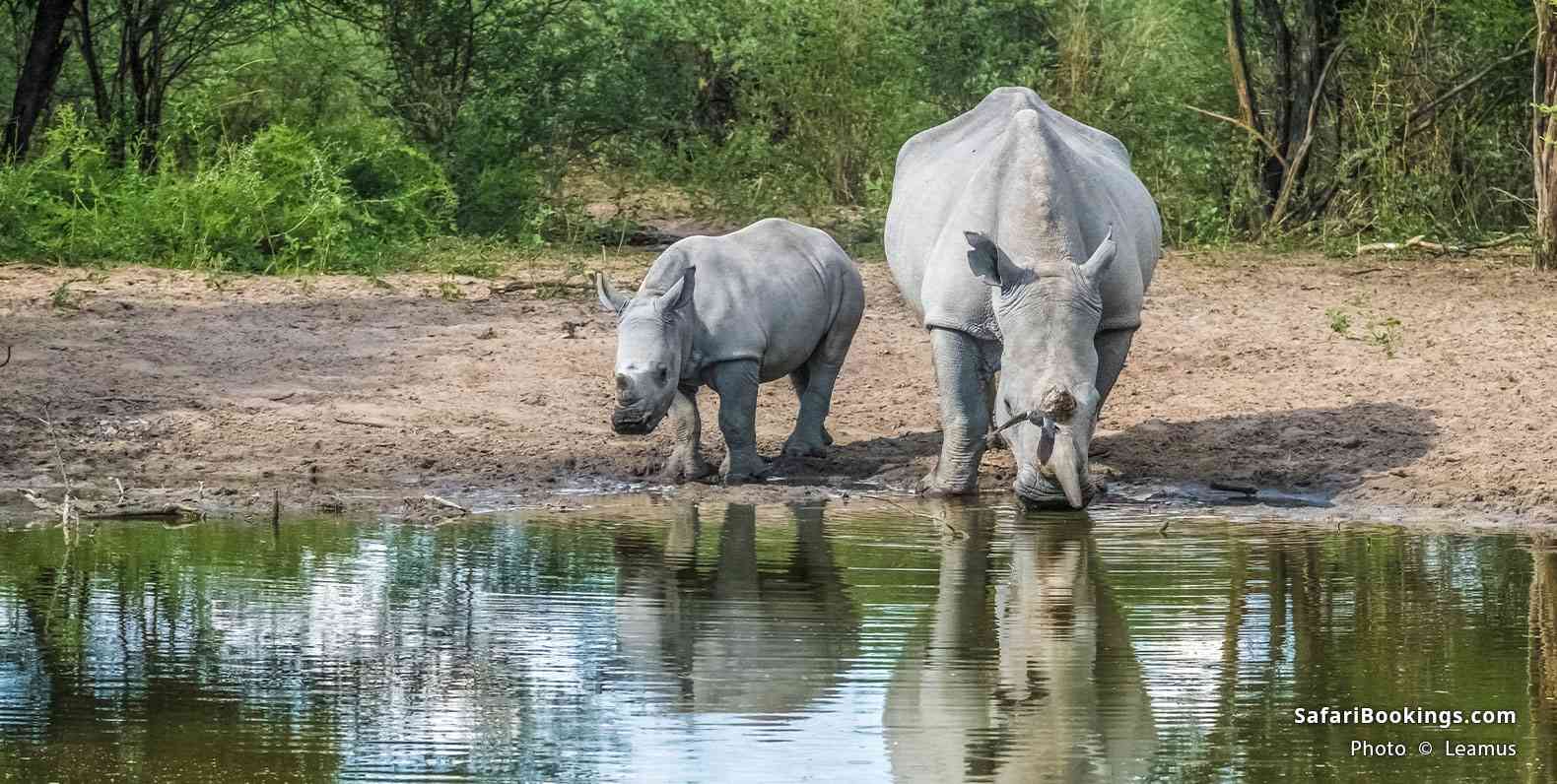
Botswana would hardly have any rhinos at all were it not for this important community-run sanctuary in the country’s east. Set up to restore rhinos to Botswana, the sanctuary has seen white rhinos, in particular, thrive, so much so that some have been released into Moremi Game Reserve in the north of the country. Sightings are common around the salt pans and throughout this compact sanctuary.
Khama Tours
Want To Go on an African Safari?
Click on the button below to compare African safaris offered by top-rated tour operators.
African Safari Tours
About safaribookings.
SafariBookings is the largest online marketplace for African safari tours. Easily compare offers from top-rated tour operators. Make decisions like a pro by using our 101,935 reviews and 223 destination guides. More About Us
Safaris by Type
- Luxury Safaris
- Budget Safaris
- Gorilla Trekking
- Chimp Trekking
- Family Safaris
- Private Safaris
- Group Safaris
- Photo Safaris
- Overland Tours
- Camping Safaris
- Fly-in Safaris
- Walking Safaris
- Birding Safaris
- Self-drive Safaris
- Canoe Safaris
Most Popular Blog Posts
- Best Time for African Safari
- Best Safari in South Africa
- Family Safari in South Africa
- African Safari Tips
- Game Reserves Near Cape Town
- What to Pack for a Safari
- Best African Safari Parks
- Top 5 Best African Honeymoon Safaris
- Top 5 Best Tanzania Family Safaris
- Best Places to See Cheetahs in Africa
- How Much Does an African Safari Cost?
- Best Places To Visit In Africa in 2024
Blog Categories

5-Day Gorilla and Chimpanzee Trekking Safari in Uganda
$2,530 to $2,750 pp (USD)
Uganda: Private tour Budget Lodge & Tented Camp
You Visit: Entebbe (Start) , Kibale NP (Chimps) , Queen Elizabeth NP, Bwindi NP (Gorillas) , Lake Bunyonyi, Entebbe Airport (End)
Kubwa Five Safaris
5.0 /5 – 122 Reviews

7-Day Luxury All-Inclusive Epic Safari
$3,240 to $3,867 pp (USD)
Tanzania: Private tour Luxury Lodge & Tented Camp
You Visit: Arusha (Start) , Tarangire NP, Lake Manyara NP, Serengeti NP, Ngorongoro Crater, Arusha (End)
Lion King Adventures
5.0 /5 – 1015 Reviews

8-Day Great Migration Safari
$3,135 pp (USD)
Tanzania: Private tour Mid-range Lodge & Tented Camp
You Visit: Arusha (Start) , Tarangire NP, Central Serengeti, Northern Serengeti NP, Serengeti NP, Ngorongoro Crater, Foothills of Mt Kilimanjaro, Arusha (End)
Safari Soles
5.0 /5 – 242 Reviews
- Experiences
Walking Safaris in Africa
Going on walking safaris in Africa is one of our favourite ways to experience our continent's sights, sounds, smells, and soul-stirring stories. From meeting rhinos in the South African bush to gorillas in Rwanda's rainforests, here's where your feet can take you and what you can look forward to.
What to expect when you go on a walking safari
When you exchange the game drive vehicle's engine rumble for a silent safari on foot, a new world of experiences opens up in front of you, where you can truly appreciate the finer details you might otherwise miss. It's a chance to enjoy the smaller but equally captivating animals and plants, to understand the climate and its impact on the ecosystem, and to discover the art of reading animal spoor.
But is it safe to traverse through Africa on foot? Don't worry about safety. Before venturing into the wilderness for your walking safari in Africa, your guides will thoroughly brief you and teach you essential hand signals – because silence is key in the wild.
As you embark on your walking safari, you'll observe animals from a safe distance, witnessing their daily routines of drinking, grazing, foraging, and engaging with one another. On previous walking safaris, we've been fortunate enough to walk with rhinos, elephants, giraffes, and even formidable predators like lions and African wild dogs, all while on foot.
The duration of your walking safari in Africa can vary, ranging from a few hours to several days. But fear not, you won't have to lug your luggage through the wilderness – you'll only carry a backpack filled with water and snacks to keep you energised for the day. Your luggage will be transported to the next destination for you.
When is the best time to go on a walking safari?
The best time to go on walking safaris in Africa varies depending on the country you decide to explore. Generally, the dry season is best for walking safaris since the vegetation is less thick, making it easier to spot wildlife without unexpected surprises lurking behind every bush. But you can enjoy shorter walks throughout the year.
You'll set off in the cool morning hours before the sun gets too hot and return to your campsite, just like you would after a game drive. And you'll have so many stories to share after your trek through the wild!
Where can you go on a walking safari?
There are many unique countries and national parks for you to explore during your walking safari. You can even mix it up and combine destinations for an unforgettable trip.
Walking safaris in Zambia
Visit Zambia for a remarkable journey to the birthplace of walking safaris, South Luangwa National Park . As you traverse the plains, you'll witness the graceful movements of the puku, Thornicroft's giraffe, Crawshay's zebra, Coke's hartebeest, lions, antelope, buffalo, and elephants.
This haven isn't just for land-dwellers but also a paradise for bird enthusiasts, with over 400 species gracing the skies. Keep your senses alert for the vibrant carmine bee-eater, adorned in a technicoloured plumage, and the majestic grey-crowned crane, proudly donning its glorious headdress. The sense of exclusivity sets walking safaris in Zambia apart, as this hidden gem is less crowded than other safari destinations.
Walking safaris in Tanzania
Choose from a variety of walking safaris in Tanzania , whether it's the semi-arid savannahs of Ruaha National Park , the vast plains of Serengeti National Park , or the enchanting realm of the giant baobab trees in Tarangire National Park . Be guided by a Maasai warrior and knowledgeable expert as you follow in the footsteps of their people. We love walking through these magnificent landscapes and encountering a diverse array of wildlife, from graceful waterbucks and zebras to majestic elephants, just to name a few.
But it's not just about the big wildlife – your guide will unveil the fascinating world of smaller insects and birds, sharing particular behaviours and intriguing facts to show you how everything is connected. And let's not forget Tanzania's friendly neighbour, Kenya, where you can also experience the wonders of a walking safari in the Maasai Mara National Reserve .
Walking safaris in South Africa
When it comes to walking safaris in South Africa , the options are endless. You can head to the iconic Kruger National Park and its surrounding private game reserves to smell, hear and feel the magic of the South African bush. Along with being Big 5 territory, the Kruger boasts an incredible variety of fauna, from grazing antelope to carnivorous predators. Another fantastic destination for a walking safari is KwaZulu-Natal , where the Hluhluwe-iMfolozi Park awaits.
This region boasts rich vegetation, diverse birdlife, and abundant wildlife, including the largest population of white rhinos in the world. For those exploring the Garden Route , consider visiting Gondwana , a private and malaria-free game reserve that offers a spectacular walking safari experience. Here, you'll have ample opportunities to observe a variety of wild animals, only 4.5 hours away from Cape Town .
Walking safaris in Botswana
Oh, Botswana! We just love going on phenomenal walking safaris in Botswana , exploring the captivating Okavango Delta and the vast Makgadikgadi Pans .
In the Okavango Delta, you can track the Big 5 and diverse antelope species. Stumble upon thrilling predator sightings, including lions, leopards, hyenas, and African wild dogs.
At the Makgadikgadi Pans, witness the beauty of flamingos and the spectacle of migrating zebra herds in search of water. Here, you'll also learn about the land's rich history, seek out fossils, and spot fascinating reptiles. At Rhino Africa, we particularly enjoy meeting up with the indigenous San bushmen to delve into their captivating folklore. Also, we highly recommend you visit the adorable meerkat colonies where you can observe Timon from "The Lion King" film in his natural habitat. Another highlight on a walking safari in Botswana is seeing the iconic Baobab trees, lovingly nicknamed "the upside-down tree", adding wonder to this region.
Walking safaris in Madagascar
Ever wanted to see adorable lemurs in the wild? Experience the wonders of walking safaris in Madagascar , where the rainforests are home to a wealth of rare wildlife found nowhere else on the planet. Be captivated by the Amber Mountains National Park, where lush rainforests showcase a stunning array of plants, including rare cycads, tree ferns, and orchids.
Look closer for reptiles, chameleons, and the elusive falanouc that inhabit this biodiverse paradise. Marvel at the Antahkarana Waterfall and crater lakes during your walking safari. Or venture to the Ankarana Special Reserve, where the limestone plateau unveils incredible needle-like formations called “tsingy”, which means "where one cannot walk barefoot". On your journey, you can also spot a variety of lemurs and the sought-after fossa, all while exploring this impressive landscape accessible via boardwalks and bridges.
Walking safaris in Rwanda
Discover the great attraction of walking safaris in Rwanda , renowned for its exceptional gorilla and chimp trekking opportunities. Go on an awe-inspiring gorilla trekking adventure, immersing yourself in the natural habitat of these magnificent primates. Volcanoes National Park is one of the best places in Rwanda for gorilla trekking, while Nyungwe Forest National Park is home to chimpanzees. Witnessing their movements first-hand is an unforgettable and magical experience we can’t get enough of.
How much does a walking safari cost?
Your walking safari could cost anything between 300-4,000 USD per person per day, depending on where you visit. Walking safaris are typically offered as an add-on to a safari vacation. All-inclusive options include accommodation, food, drinks and a comprehensive range of amenities. Please note that gratuity, spa treatments, and souvenir purchases are not included.
What to pack for a walking safari in Africa?
When packing for your walking safari in Africa , you should remember the essentials. These include comfortable walking or hiking shoes, a hat, sunglasses, and sunscreen. Opt for lightweight, long-sleeved clothing to protect your skin from both the sun and the elements of the bush. Also, don't forget to bring insect repellent. Unless otherwise advised by our Travel Experts, your camp will provide you with a sturdy backpack to carry water, snacks, and any other personal items you may need during the safari.
By now, we're sure you're inspired to undertake your own eventful adventure! Trust us when we say you won't regret it. The only hard work is to choose from a list of enticing destinations.
We can't wait to share our love for walking safaris in Africa with you. So lace up your boots, embrace the call of the wild, and entrust our team of experienced Travel Experts to curate your perfect walking safari experience.
How it works
- 1 Describe your dream trip
- 2 A Travel Expert will help curate your experience
- 3 Confirm & start packing
Let's plan your trip
Enquire now and a Travel Expert will get back to you within 24 hours.
Ready to start your journey?
ZA Number: +27 21 469 2600
Why book with us.

Safari animals: the story of rhinos and the best places to see them in 2022
Aug 16, 2022 • 6 min read
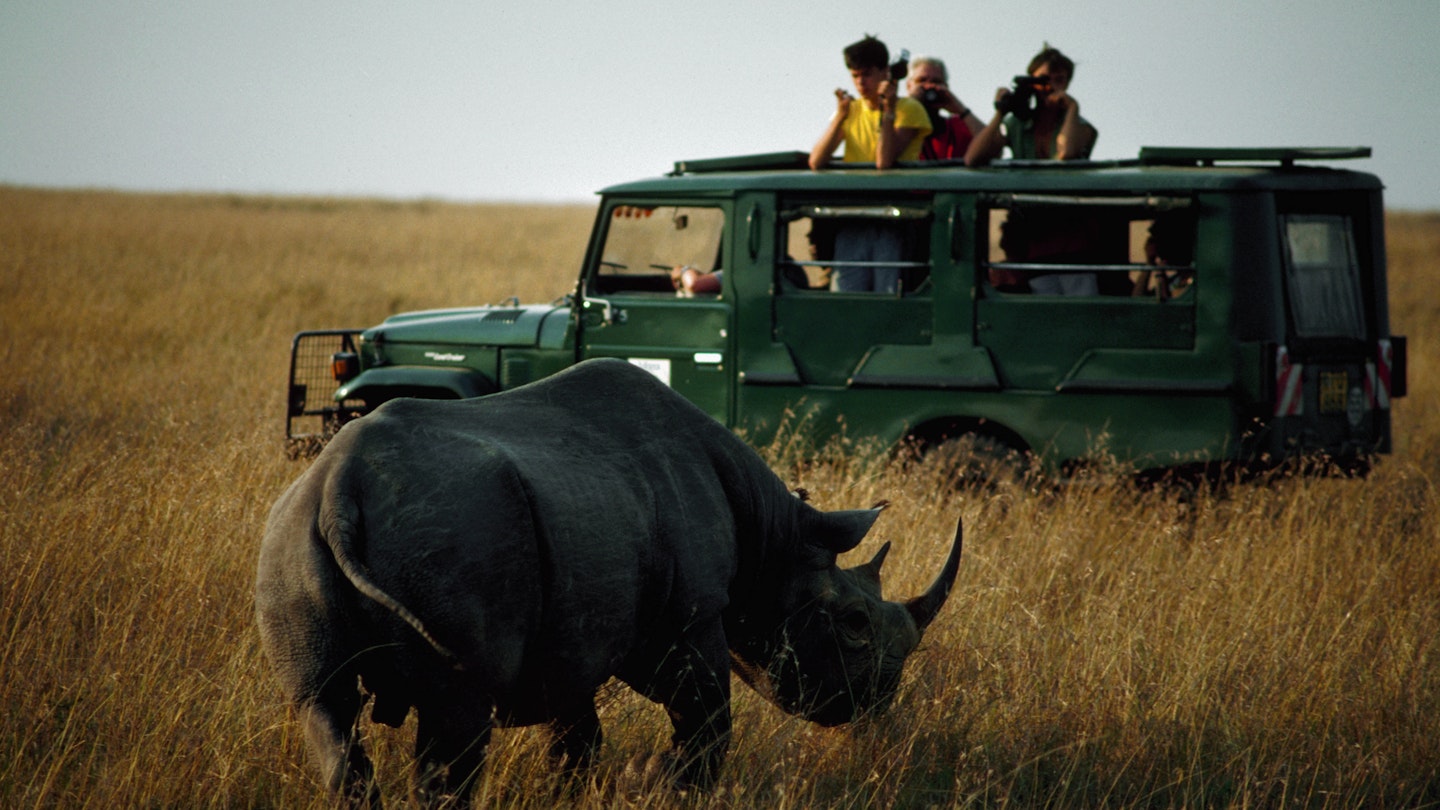
A large black rhino making its way across the parched grasses of Etosha National Parnk in Namibia © Manuel ROMARIS / Getty Images
Under threat of extinction and a testament to the resilience of wild creatures in wild places, the African rhino is an enduring symbol of the beautiful strangeness of the natural world.
If you see this member of the Big Five in the wilds of Africa , you’ve hit the safari jackpot.
In celebration of World Rhino Day on September 22, 2022, we'll show you how to make it happen.

Rhinos: a picture painted in black and white
When it comes to land animals, only elephants are bigger than rhinos. Rhinos have very few natural enemies, apart from humankind, and they’re so large that no other predator can bring down an adult rhino; lions and other large predators do occasionally kill baby rhinos.
There are two main species of African rhinoceros, black and white, although the names are something of a misnomer. Rhinos aren’t named for their color, but for their lip shape: ‘white’ comes from wijde (wide), the Boers’ term for the fatter-lipped white rhino.
Safari animals: the story of lions (and the best places to see them)

Black rhinos are smaller than white rhinos, but adult black rhinos still clock in at anywhere between 700kg and 1400kg. Black rhinos are browsers – they eat leaves, twigs and branches – which means that they’re most often found in thickets and woodlands. The considerably larger white rhino can weigh up to 3600kg and is a grazer, preferring short grasses on the savannah plains.
Rhino mothers give birth after pregnancies of around 15 or 16 months, and baby rhinos will survive off its mother’s milk for up to a year after birth. In the wild, rhinos can live for up to 50 years if allowed to do so.
A day on safari in Africa: what you can expect in camp and in the wild
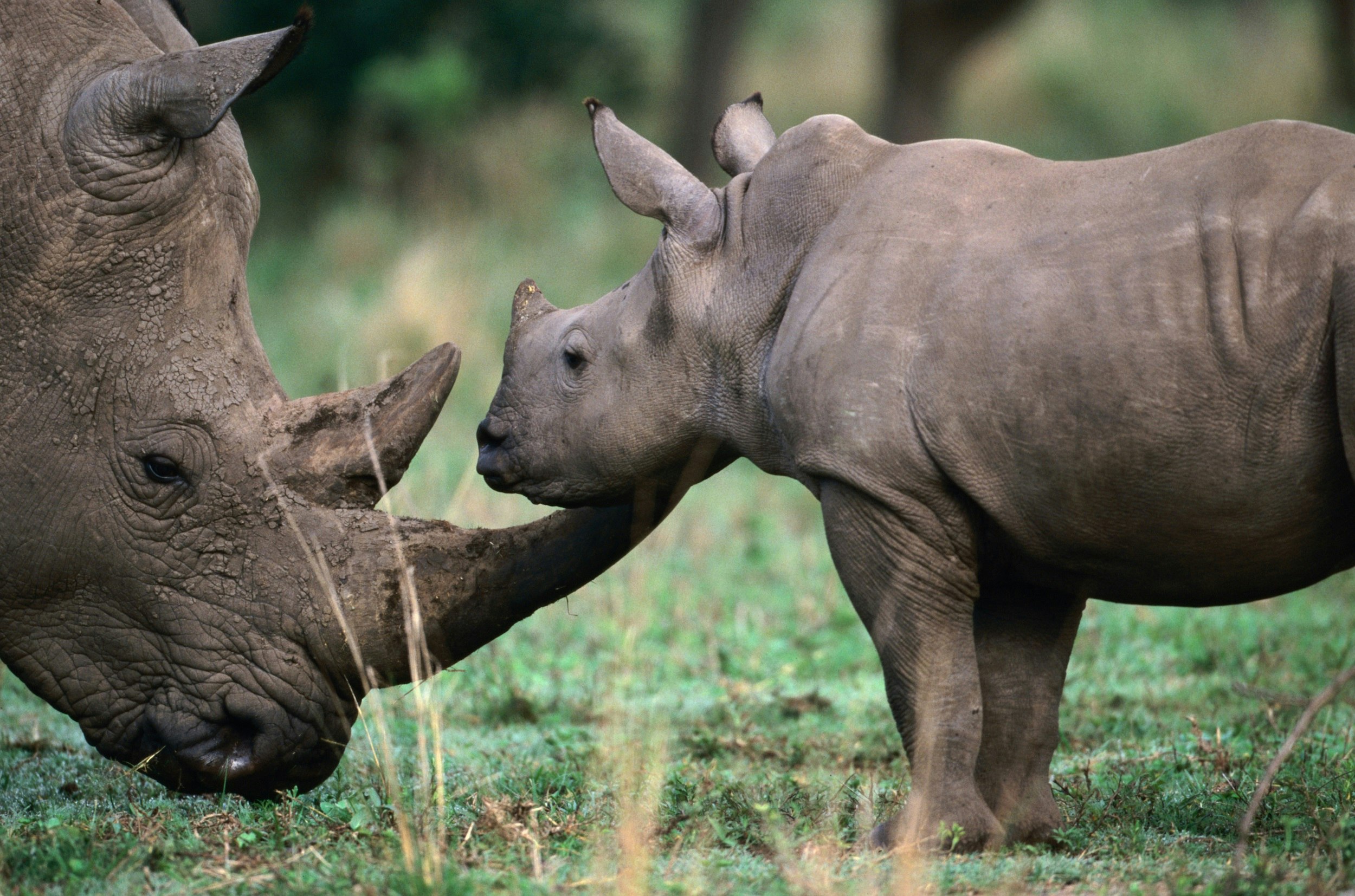
A social life
Although rhinos do inhabit set territories, aggression between rhinos is rare in areas where rhino density is high; breeding males will, however, attack competitors. In Namibia’s Etosha National Park , rhinos often commune with other rhinos at waterholes after dark. Female rhinos frequently live in close proximity to other females, but the mother and her young is the core foundation of most rhino families. That is until the mothers drive off their offspring when they become independent at around two to four years old, which enables the mother to breed again.
The elephants of Africa: a complete guide to the best places to see them in the wild

A rhino’s horn
The horn of a rhino is made not from bone but from keratin, a protein found in our hair and fingernails. A lucrative prize for poachers over the past century, the horn owes its current value to its use in traditional Asian medicines, including as an aphrodisiac, although its legend dates back much further. In ancient Greece, rhino horn was believed to purify water, while the ancient Persians believed it could detect poisons. In the centuries since it has been used to make the handles of daggers in Yemen, and everything from walking sticks and door handles to the interior of limousines elsewhere.
According to the latest estimates, a single rhino horn can sell for up to US$65,000 on the black market in parts of Asia, although that figure has reached US$300,000 at times over recent years.
Where you should go on your first safari in Africa
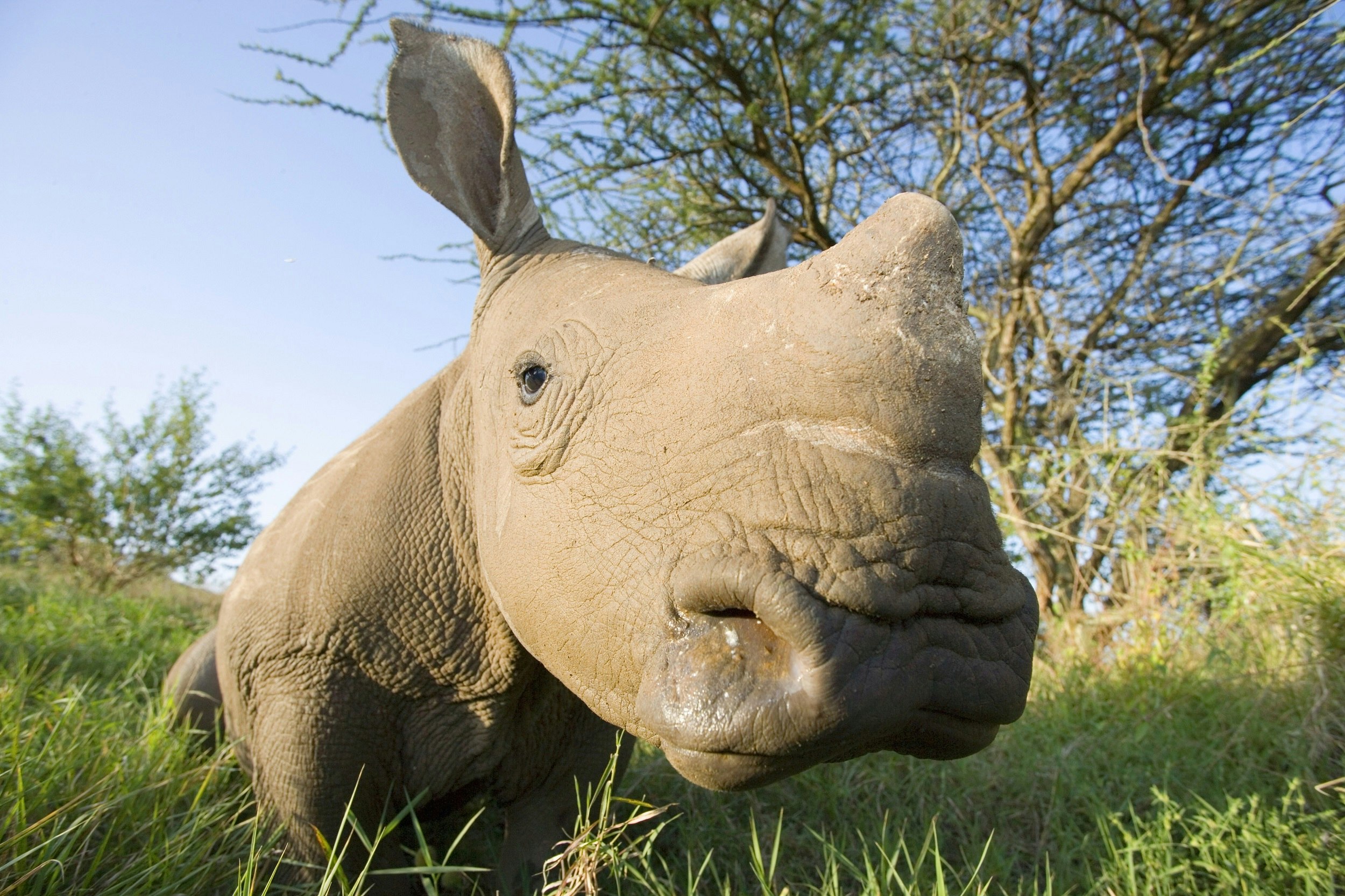
The best places to see rhinos on safari
Rhinos were once found across Africa, even deep in what we now know as the Sahara Desert. These days, Southern Africa and East Africa are the last strongholds of the rhino, and intensive conservation efforts have seen the species return to many lands where it was wiped out in the 20th century.
Top tips to make your African safari more affordable
South Africa
Given that South Africa is home to 90% of all white rhinos, this is where you should start your search for the species. Sightings are extremely common in Kruger National Park and the surrounding reserves. Other good possibilities include Hluhluwe-iMfolozi Park and Madikwe Game Reserve, as well as numerous private reserves.
The waterholes of Etosha National Park in Namibia are excellent for black rhino sightings, especially after dark. Damaraland is a remote but terrific alternative.
Kenya has more black rhinos than any other country and your best bet is up on the Laikipia Plateau , including Ol Pejeta Conservancy and Lewa Wildlife Conservancy, both of which have black and white rhinos. Other good places include Nairobi National Park , as well as the national parks of Tsavo West , Meru , Aberdare and Lake Nakuru .
The main crater in Ngorongoro Conservation Area has Tanzania ’s densest population of black rhinos. There’s also a handful in Serengeti National Park .
Although rhinos have been reintroduced into the Okavango Delta , sightings are rare. Try Khama Rhino Sanctuary , northwest of Gaborone .
Try North Luangwa National Park in Zambia for black rhinos.
Matobo National Park in Zimbabwe is a rare opportunity in southern Africa to see both white and black rhinos.
eSwatini (formerly Swaziland)
Stunning Mkhaya Game Reserve in eSwatini has impressive black and white rhino populations.

Are Rhinos in peril?
The story of the white rhino is one of conservation’s greatest success stories. Conservationists believe that fewer than 100 white rhinos may have been left in the wild early in the 20th century. Official estimates place the current number at between 17,212 and 18,915. South Africa is home to the vast majority of surviving southern white rhinos. The species’ recovery has been so successful that the white rhino is now listed only as Near Threatened.
Sadly, the northern white rhino subspecies is on the brink of extinction. Only two females survive, at Ol Pejeta Conservancy in Kenya. The last male, Sudan, died in March 2018.
Are you ready for a self-drive safari in Africa?
The black rhino has also made a dramatic recovery, although not quite to the same extent as the white rhino. Some scientists believe that there were 600,000 black rhinos in the wild in 1900, and as many as 70,000 remained in 1970. In 1995, there were just 2410 still alive. Intensive conservation measures have seen a slow but steady recovery to a continent-wide population of between 5366 and 5627 individuals. The species remains Critically Endangered.
In early 2014 Namibia caused international controversy when it auctioned off a hunting license for a black rhino with a promise that the revenues raised would be channeled back into rhino conservation and anti-poaching measures. The winning bidder paid US$350,000 to hunt the animal, although the government claimed that critics of its policy caused an earlier bid of US$1 million to be withdrawn due to negative publicity. The government also argued that the rhino in question, an older and aggressive bull male, was past breeding age and was considered a serious threat to other rhinos.
This article was first published November 2019 and updated August 2022
Explore related stories
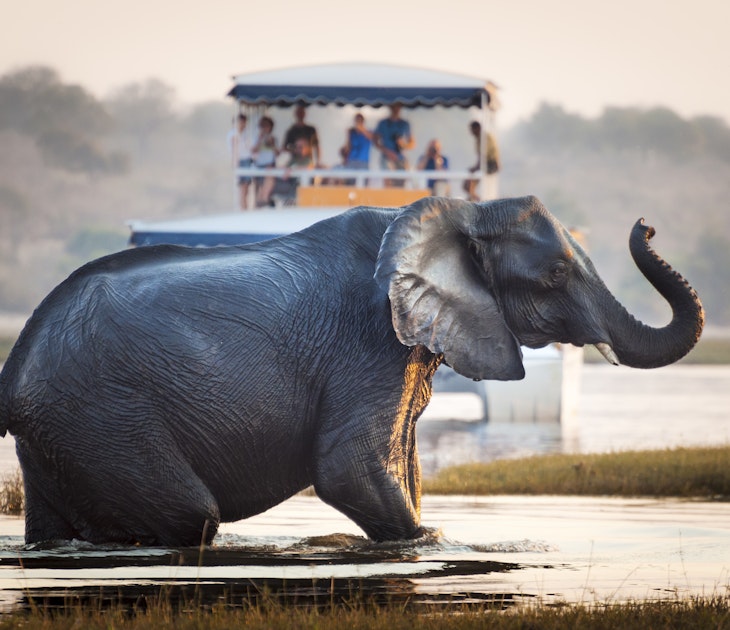
National Parks
Jul 28, 2022 • 7 min read
Nature’s gentle giant, the African elephant, is a safari must-see. Here are the best places to see them.
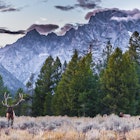
Dec 2, 2021 • 5 min read

Mar 20, 2024 • 8 min read

Feb 27, 2024 • 6 min read

Feb 20, 2024 • 17 min read

Feb 19, 2024 • 7 min read

Feb 12, 2024 • 10 min read
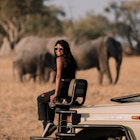
Jan 31, 2024 • 6 min read

Jan 30, 2024 • 19 min read

Jan 5, 2024 • 20 min read
Rhino Africa Safaris

- See all photos
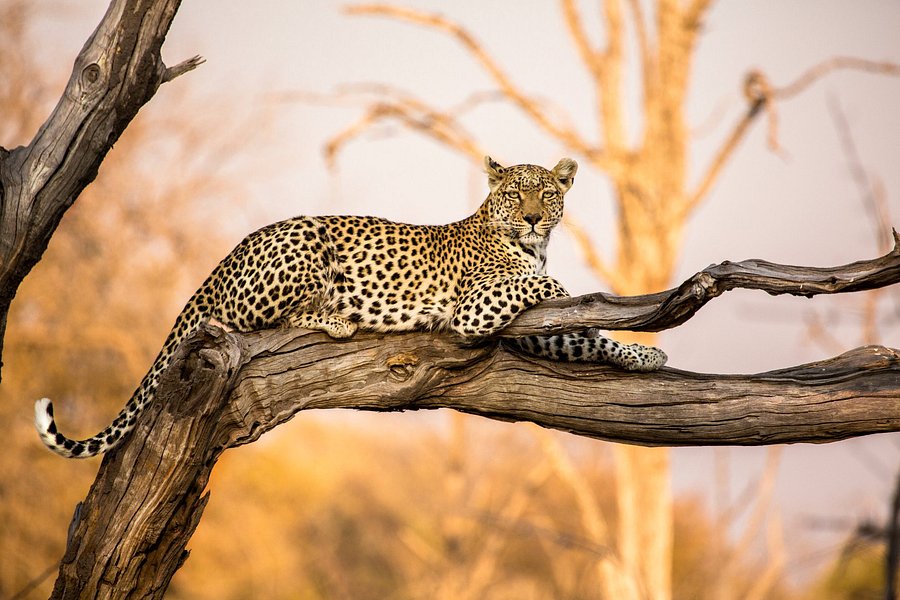
Similar Experiences

Most Recent: Reviews ordered by most recent publish date in descending order.
Detailed Reviews: Reviews ordered by recency and descriptiveness of user-identified themes such as wait time, length of visit, general tips, and location information.
Rhino Africa Safaris - All You Need to Know BEFORE You Go (2024)
Impressively large and with horns for a nose, the prehistoric looking rhino is one of Africa’s most iconic animals.
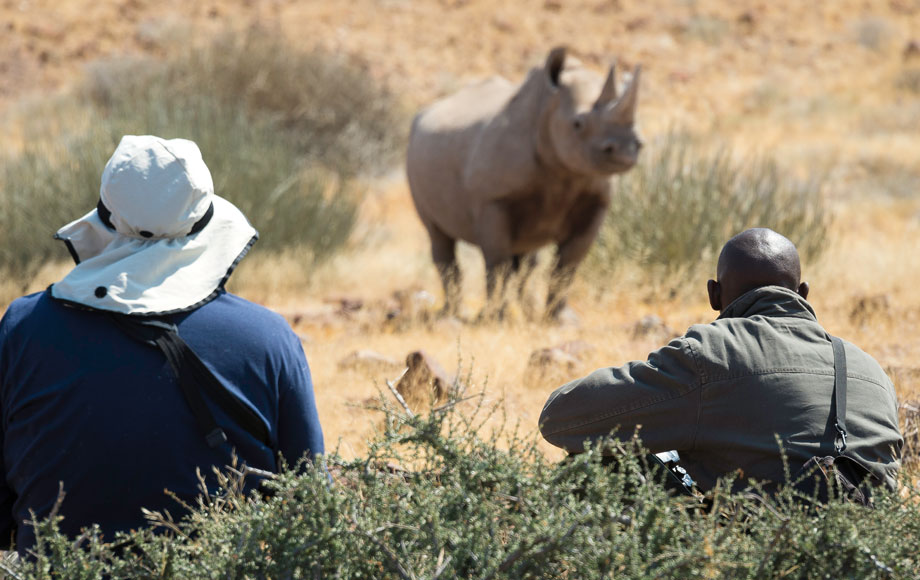
Common Name – Rhinoceros
Scientific Name – Rhinocerotidae
Current IUCN Red List Status – Critically endangered or Near Threatened
Estimated no. of mature individuals – 21,000 white rhino and around 5,600 black rhino
Impressively large and with horns for a nose, these prehistoric looking creatures are one of the most iconic African animals. In fact, there are five species of rhino in the world, three in Asia and two species in Africa, all of which are endangered.
At the beginning of the last century there were about 500,000 rhino on earth, but as a result of trophy hunting and poaching for their valuable horn their numbers have dwindled to just a few thousand.
Black rhino vs White rhino
The two African species are the white or square lipped rhinoceros (Ceratotherium simum) and the black or hook-lipped rhinoceros (Diceros bicornis). Despite their huge size they eat only plants, which they pluck with their lips as they have no front teeth.
The biggest threat to rhinos in Africa today is the illegal trade in their horn. In some countries the horn is considered a status symbol or (erroneously) is highly prized for medicinal purposes. The fact that it is formed from keratin like our hair or finger nails and has been shown to have no medicinal value does not seem to influence the trade. The amazing work done by conservationists is having some success in protecting rhino in Africa, however it is a constant and very costly battle. It also takes its toll on the rangers who protect the rhino, as many have lost their lives in the line of duty.
White rhino
The white or square lipped rhino are grey in colour like their cousins. The confusion may have come about due to the Dutch word for wide – wijd – or the Afrikaans word – wyd, which is pronounced vate. White rhino have a wide mouth and usually graze on grass, whilst their cousins the black rhino have a hooked lip and usually browse on leafy bushes. Being grazers white rhino are usually found in larger numbers out on the grassland and are more sociable, whereas black rhino tend to be more solitary.
There are two subspecies of white rhino: the northern and the southern. The northern white rhino is almost extinct, with just two animals left, both females, which live on the private Ol Pejeta Conservancy in Kenya and are guarded 24/7. The southern white rhino however has been a conservation success story. Due to the persistent efforts of conservationists the numbers of white rhino are now about 21,000 and increasing. Most are found in private reserves in South Africa, Namibia, Zimbabwe and Kenya.
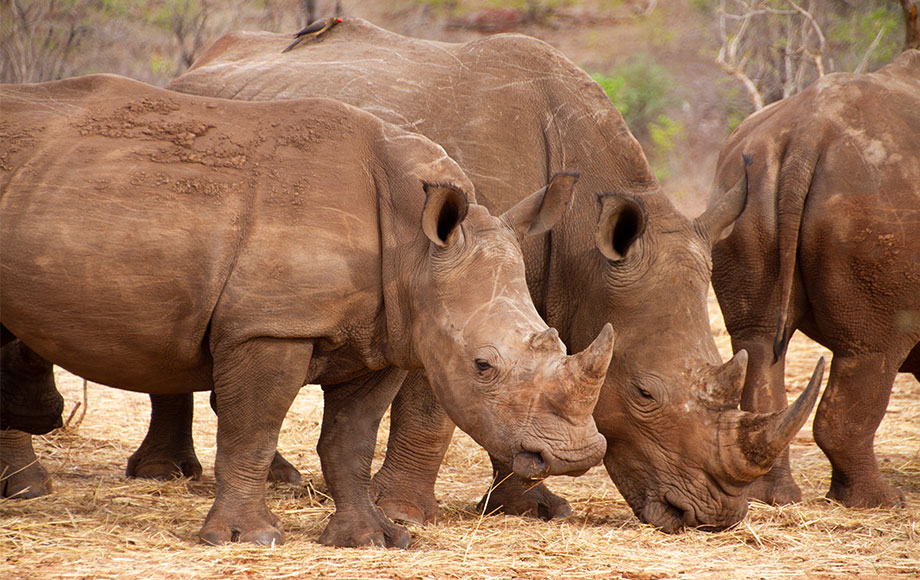
Black rhino
Black rhino are slightly smaller than their cousins. They are native to East and Southern Africa and live in a variety of habitats from forest and woodland to dry savannahs. However, they are critically endangered with only a few isolated small populations remaining in protected private reserves.
Best safaris to see rhino
South Africa’s Kruger National Park and surrounding private reserves are the best places to see both white and less frequently black rhino. In Namibia you can also see white rhino, and sometimes black rhino, in Etosha National Park. In East Africa, Tanzania is one of the best places to see rhino, particularly inside the famous Ngorongoro Crater which has a small population of black rhino. In Kenya white rhino can be seen quite easily in Lake Nakuru National Park. The private Ol Pejeta Conservancy on the Laikipia Plateau near Mount Kenya is a haven for rhino, with some southern white rhino (introduced from southern Africa), some black rhino as well as the world’s last two northern white rhino (both females).
Tanzania’s Northern Treasures
Experience three of Tanzania’s best known national parks and the country’s epic wildlife in Tarangire, Ngorongoro Crater and the celebrated Serengeti.
Timeless Deserts & Namib Wildlife
Discover the silent beauty of Sossusvlei, track Africa's last free-roaming rhino in Palmwag and go on safari in Etosha, Namibia's finest wildlife reserve.
Kruger and The Cape
Discover some of South Africa's best known attractions on this journey that begins with a big game safari in the world-renowned Sabi Sand and concludes in beautiful Cape Town.
Recommended places to see Rhino
Kicheche laikipia.
Kicheche Laikipia is a small eco-camp set in shady indigenous forest in the Ol Pejeta Conservancy, with iconic Mount Kenya as a backdrop.
Makutsi Safari Springs
Family-owned and operated, Makutsi Safari Springs is a private reserve which has a very similar ecosystem to neighbouring Kruger National Park. This delightful property encompasses a number of
Sabi Sabi Earth Lodge
Sabi Sabi Earth Lodge has been described as the most environmentally sensitive luxury safari lodge in all of Africa.
Tintswalo Safari Lodge
Tintswalo Safari Lodge offers old-world elegance and an authentic safari experience in the beautiful Manyeleti Reserve.
Toka Leya Camp
Nestled on the banks of the iconic Zambezi River in the heart of Zambia’s scenic Mosi-oa-Tunya National Park, Toka Leya Camp is just 12km upstream from the awe-inspiring Victoria Falls.
Rhino Facts:
- Rhinos are the second largest land animals after elephants
- White rhinos are the largest species and can weigh up to 3,500 kgs
- The word rhinoceros literally means “nose horn”
- Rhinos have only three toes on each foot (elephants and hippos have 4).
- Rhino horn is made of keratin, just like our finger nails
- Black rhinos and white rhinos are both dark grey or brown
Find out more about our tailor made African safaris. Get in touch with one of our Destination Specialists.
Subscribe below to keep up to date, find out more about our tailor made african safaris, more wildlife.
The Cape buffalo is a member of Africa’s “Big 5” and therefore a must-see for any safari-goer.
Cape Buffalo
The Cheetah is the fastest land animal on the planet and one of Africa’s most well-known and sought-after sightings when on safari
African elephants are the world’s largest land mammal and were once numerous, roaming across the whole African continent.
With their unique and beautiful colouring, giraffes are one of Africa’s most recognised animals.
Grizzly bear or grizzly is the name given to the subspecies of brown bear that inhabits North America.
Grizzly Bear
The largest cat in the Western Hemisphere, jaguars are strongly built, well-muscled predators native to the Americas
King Penguins don’t actually live on the Antarctic ice shelf, instead they prefer the sandy snowless beaches of the Sub-Antarctic islands.
King Penguin
Lemurs are endemic to the island nation of Madagascar where 107 species can be found. However each individual species is often only found in a
Leopards are graceful cats and still geographically wide-spread across Africa, including isolated parts of Morocco and Egypt.
A member of the “Big 5” and perhaps Africa’s most iconic species, the African Lion is a highly sought after sighting while out on safari.
Meerkats are found in Southern Africa and they are often seen standing on their rear legs, forever gazing out over the sweeping plains.
Orcas, informally referred to as killer whales because of their fearsome reputation, are majestic mammals.
Polar bears are found in the Arctic regions of Canada & Europe. The majority of their population are found in Canada, particularly around the
Impressively large and with horns for a nose, these prehistoric looking creatures are one of the most iconic African animals.
E-Newsletter
Sign up to receive updates about exciting journeys, special offers and more

Rhino Safari Guide
Wandering elegantly across the savannahs of Africa, rhinoceroses are the emblem of the wilderness. They move with an elegance and grace that contrasts their prehistoric frames and unquestionable power. Horns pointing skyward, faces cloaked in emotion, these are special animals that truly take the breath away.
Black rhinos and white rhinos? What’s the difference?
Both black and white rhinos are grey in appearance. It’s the black subspecies that is most critically endangered and there are less than 2,000 of them left in the wild. This is the rhino you’ll mostly see in East Africa, although a few are dotted about the parks of Southern Africa. Black rhinos have a distinguishing hooked lip and are browsers, feeding off bushes and shrubbery.

Over half of the world’s rhino live on the savannah of the Greater Kruger , spread out across the national park and a variety of unfenced private reserves. These are southern white rhinos, the Southern African grazer that you’ll also see in a handful of reserves across the rest of the region. Although there’s close to 20,000 of them in the wild, it’s these rhinos that are really feeling the brunt of poachers.
Destinations with black and white rhinos together
Put the two rhinoceros species side by side and you’ll notice that the white rhino is much larger. To enhance conservation, a number of reserves have impressively relocated species, so white and black rhinos now inhabit the same landscape. Kenya’s Laikipea conservancies area offers some thrilling encounters with both. We can also connect you with excellent guides in the Kruger and Namibia’s Etosha, who can show you both rhino species on wild open landscapes.
For a real safari treat, Ol Pejeta Conservancy is also home of the only three northern white rhinos left on the planet. Visit soon because breeding has been unsuccessful so far, so the subspecies will soon have disappeared.
Spotting rhinos on a safari
Both black and white have an impressive bulk and sense of power. Yet these are shy and reserved creatures, with behaviour that confounds their undoubted power. They plod softly across the savannah, causing goosebumps to rise and the camera to click furiously. We love the moment of calm that dominates the ambience when a rhino wanders past. Spot some animals and it’s hard to contain your excited shout. Spot a rhinoceros and you just smile, enchanted by the intimacy of the experience.
Adult white rhinos weigh over two tonnes and their size draws gasps. Like most grazers, you’ll see them on the open grasslands and savannahs. Guides will keep a respectful distance as rhinos really don’t like to be disturbed. Look past the armoured shell and fierce horn, because these are amongst the most tranquil and relaxed of African mammals.
The importance of an early start when looking for black rhinos
Smaller black rhinos feed in denser savannah, which makes them harder to stop. They’re incredibly shy and you really need to be exploring in the cool morning air to have a chance of spotting them. Once the sun is beating down, black rhinos like to retreat to their private solace. A great example of this is found in Ngorongoro Crater , where you’ll rarely see the resident black rhinos after 9am.
Intimate experiences with rhinos
Rhino conservation is huge at the moment and we prefer to celebrate the successes rather than dwell on the poaching. Africa does incredibly well in preserving a natural world that disappeared from Europe many centuries ago. Furthermore, the biggest impact on rhino numbers came when they were shot in their hundreds of thousands by colonial farm owners (rhinos used to love their crops).
Conserving the rhinoceros is being enhanced by a greater understanding of the animal. It’s possible to visit these giants on foot, with skilled trackers that ensure the rhinos are resting peacefully before you can get close. Mosi-au-Tunya National Park offers the experience, which is a complete change of pace from visiting Victoria Falls in the same park. We can also recommend a number of conservation projects where you can meet some of the researchers and gain first-hand knowledge of the techniques being used.
Rhinos on your African safari
Critically-endangered animals are never going to be easy to spot. Other than the Greater Kruger and certain Laikipea conservancies, seeing rhinos will be a rarity rather than an everyday. Botswana hardly has any and they’re long gone from Uganda and Rwanda.
However, the great news is that rhinos inhabit more and more parks and reserves across the continent. So on a multi-stop East or Southern African safari, time might stand still as this exquisite wonder wanders past.
Quick Quote
Privacy settings.
We use cookies and similar methods to recognise visitors and remember their preferences. We also use them to measure ad campaign effectiveness, target ads and analyse site traffic. They activate only after you agree by selecting "Accept". Alternatively, you can decline or customise your preferences by choosing "Cookie Settings". Additional details are available on our privacy policy page .
Cookie Settings
Customize your cookie preferences:
Travel Enquiry
Africa Sky and our other brands would like to email you from time to time with our newsletter, holiday offers and information about our products and services. Please tick here if you do not wish to receive these emails. We will process your personal data in line with our Privacy & Cookies Policy . Our other brands include Tropical Sky, American Sky, Canadian Sky, Australian Sky, New Zealand Sky, Just Seychelles.com and Tropical Sky Weddings.
Africa Sky and our other brands* would like to email you from time to time with our newsletter, holiday offers and information about our products and services. Please tick here if you do not wish to receive these emails. We will process your personal data in line with our Privacy & Cookies Policy . Our other brands include Tropical Sky, American Sky, Canadian Sky, Australian Sky, New Zealand Sky, Just Seychelles.com and Tropical Sky Weddings.
TOP DESTINATIONS
- Kruger Park
- Okavango Delta
- Serengeti National Park
- Victoria Falls
TOP COUNTRIES
South Africa
TRAVEL DEALS
View All Travel Deals
SOUTHERN AFRICA
East africa, indian ocean islands, top experiences.
- Beach Holidays
- Family Safaris
- Honeymoon Safaris
- Desert Safaris
- Luxury Rail Safaris
- Multi-Generational Safaris
- Positive Impact Safaris
- Photographic Safaris
- Walking Safaris
WILDLIFE SAFARI
- Big Five Safaris
- Birding Safaris
- Gorilla Trekking Safaris
- Migration Safaris
- Mobile Camping Safaris
- Horseback Safaris
FEATURED EXPERIENCES
Comfort levels, property types.
- Tented Camps
- Boutique Hotels
Featured Safari Collections
- Extraordinary
- Saruni Basecamp
GET TO KNOW US
- Meet The Team
- Pricing Explained
- Traveller Reviews
- Traveller Stories
- Why Book With Us?
- HerdTracker
- Safari Cost Calculator
- South Africa In 360
- Trusted Safari Partners
What are you looking for?
- Safaris & Tours
- Destinations
- Experiences
- Accommodations
- Why book with us?
Hello traveller!
It's in Cape Town now.
We're sorry. Our safari planners aren't available now. Our office hours are 08:00 - 19:00 (GMT+2).
Call us to speak to an experienced safari planner.
Alternatively, we recommend...
Schedule a phone or Zoom call with one of our safari planners
Complete our travel enquiry form to connect with a safari planner
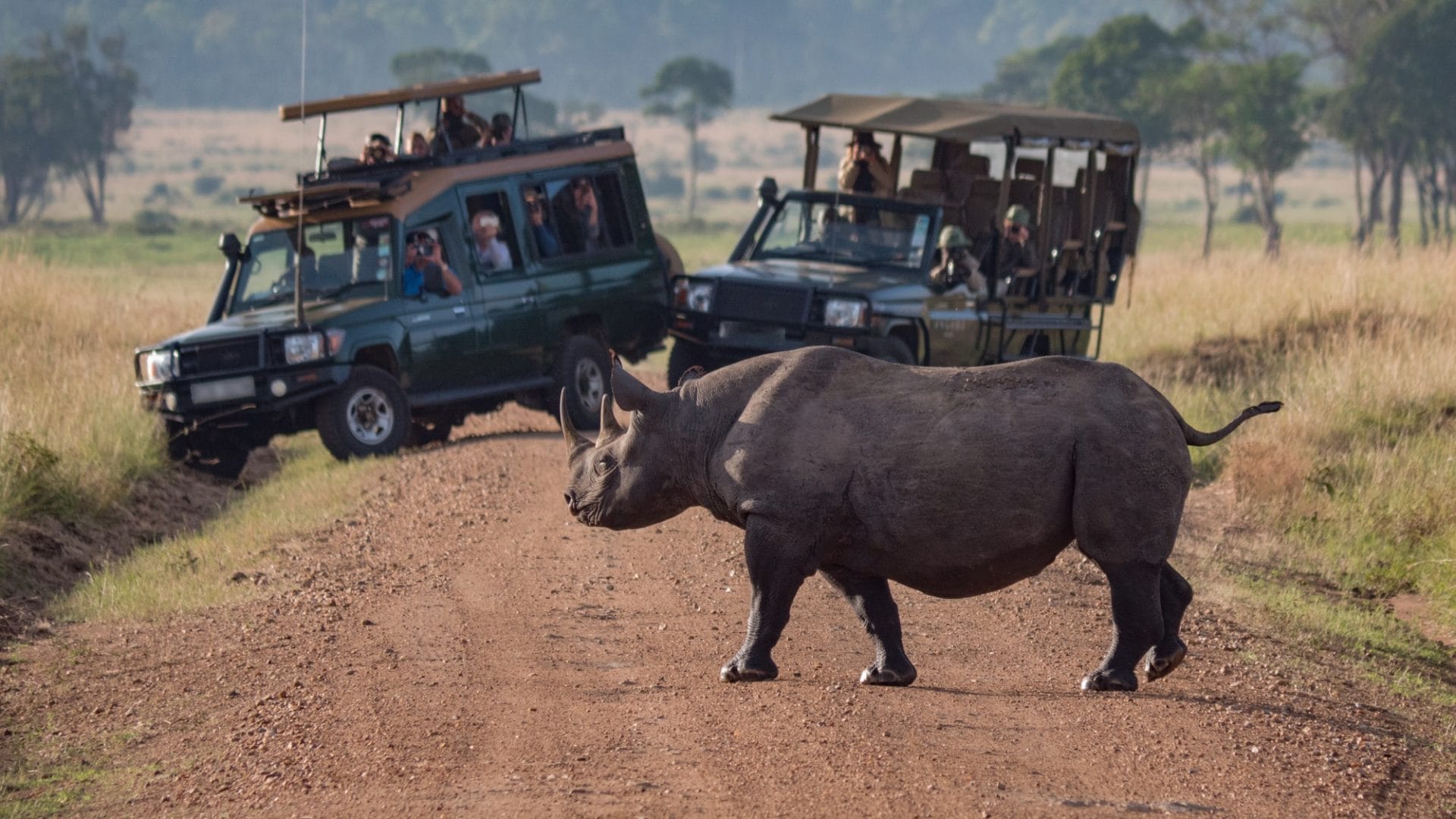
Rhino Safaris in Africa
Africa's best authentic tailor-made safaris, rhino safaris.
The world’s attention is on the African rhino as their numbers thin out fast due to poaching. All five of the world’s rhino species are endangered and some are even on the brink of extinction. Seeing one of these majestic creatures in the wild is high up on the list of any wildlife lover.
White rhino (northern and southern) and black rhino are the best known sub species in Africa, but there are also Indian rhino, Javan rhino and Sumatran rhino. The northern white rhino is critically endangered, with only a handful left in captivity and a slim chance of them reproducing. The four subspecies of black rhino are either critically endangered or almost extinct. While the southern black rhino and south western black rhino are out of immediate danger for the moment, the East Africa black rhino in Tanzania’s numbers are declining. The north western black rhino has been declared extinct in 2011.
As the rhino populations sadly decline, you should move heaven and earth to see this amazing animal in the wild before its too late
Popular Rhino Safaris in Africa
Each of our popular itineraries can be tailor-made to suit your budget as well as your specific interests..
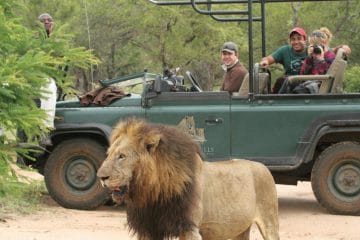
Sabi Sands and Timbavati Safari
Southern Africa South Africa Timbavati Sabi Sands
From $ 4950 /USD
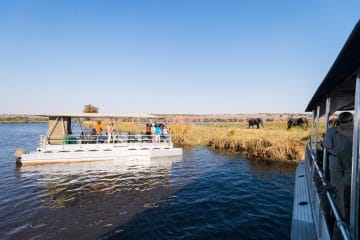
Botswana & Zimbabwe's World Wonders
Southern Africa Botswana Okavango Delta Chobe Zimbabwe Victoria Falls
From $ 3760 /USD
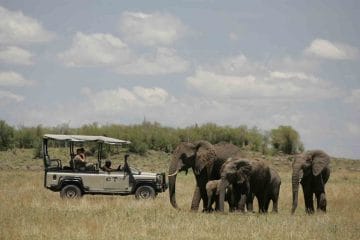
Samburu, Rhinos and Mara Safari
East Africa Kenya Samburu Buffalo Springs
From $ 5880 /USD
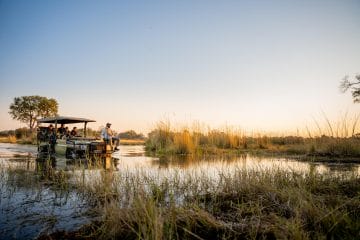
Sabi Sand, Okavango Delta and Central Kalahari ...
Southern Africa South Africa Sabi Sands Botswana Okavango Delta Kalahari Desert
From $ 8950 /USD
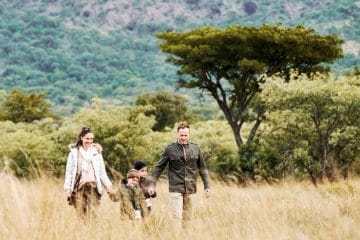
Family Safari in Malaria Free Waterberg
From $ 3300 /USD
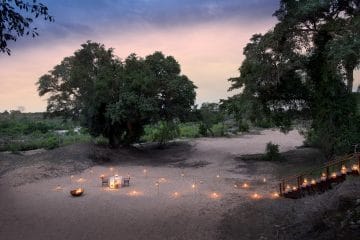
Delightful Cape Town & Kruger Luxury Safari
Southern Africa South Africa Kruger National Park Sabi Sands Cape Town
From $ 5475 /USD
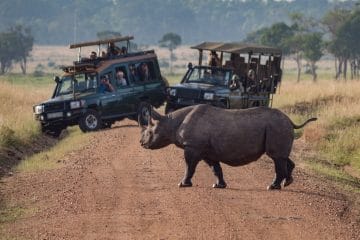
26 Rhino Safaris to choose from
Stay for 3 - 13 days
What Destinations have Rhino Safaris in Africa
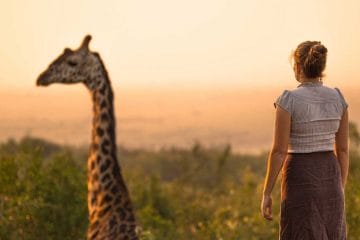
What you need to know about Rhino Safaris in Africa
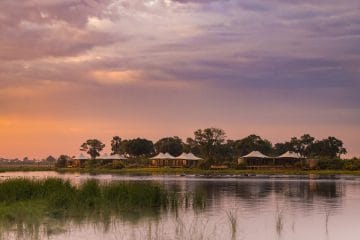
New Safari Lodge Openings to Look Forward to in 2024
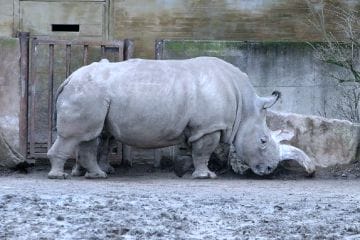
Northern White Rhino – Can science save the rhino from extinction?

Shamwari Group raise money for rhino conservation

The Eight Best Places to Spot Rhinos in Southern Africa
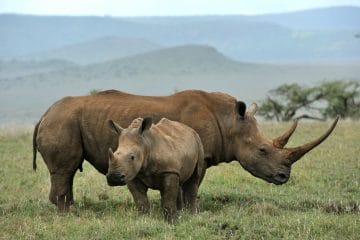
Do you know the difference between the Black and White rhino?

Interview with actress Rula Lenska – Saruni Rhino’s first guest
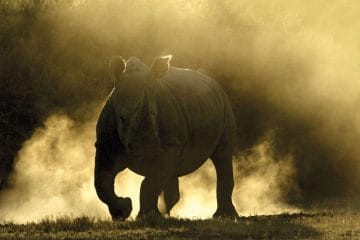
Saruni Rhino – Walking with Giants
Top 5 facts about black rhinos, why travel with us, recent reviews from travellers who planned and booked their africa trips with discover africa safaris, megan and steve are professional, friendly ,helpful ,listened to our needs and....
Safari in Namibia Review
Jenny, South Africa 16 Jan 2022
Hassle free and very professional service from start to finish..
Motswari Game Reserve & Cape Town Tour Review
Debbie, Australia 16 Mar 2020
Our month-long trip to africa was an absolute gem.
Month-long Trip in Africa Review
Jacob Weiss, Israel 11 Nov 2019
A most memorable adventure..
The Amazing South African Adventure Review
Margery, United States 04 Jul 2016
Excellent travel service provided by discover africa safaris..
Safari Holiday Review
Joris Dieterman, Netherlands 01 Dec 2013
Thank you for all your help discover africa safaris.
Safari tour through Africa’s highlights Review
Lisa and Niall Shapiro, Australia 01 Feb 2013
Travel with confidence, with over 20 years of experience, our team will help you choose the perfect african safari for your adventure., 24/7 support, personalized, ready to plan your tailor-made safari.

Antoinette Booyse, Safari Travel Planner
Free safari planning advice from destination experts
Registered Members of these Organizations
USEFUL LINKS
- African Safaris
- African Safari Tours
- African Safari Lodges
- Why Book with us?
- Content Collaborations
- Safari Cost Estimator Tool
- Wildebeest Migration
- Privacy Policy
- Website Terms of Use
POPULAR COUNTRIES
- View All Countries
- South Africa Safaris
- Botswana Safaris
- Kenya Safaris
- Tanzania Safaris
- Namibia Safaris
- Rwanda Safaris
- Uganda Safaris
- Zambia Safaris
- Zimbabwe Safaris
POPULAR DESTINATIONS
- View All Destinations
- Cape Town Holidays
- Kruger Safaris
- Victoria Falls Safaris
- Masai Mara Safaris
- Serengeti Safaris
- Etosha Safaris
- Chobe Safaris
- Okavango Delta Safaris
TRAVEL BLOGS
- Virgin Atlantic and Kenya Airways improve connectivity to Kenya
- South Africa’s Mega Landscapes Plan: Conservation Boost or Nature Risk?
- Rwanda vs Uganda: Which is Better for Mountain Gorilla Trekking?
- Kruger’s New Gate to Grow Tourism + SA’s Top Parks to Visit in 2024
- East Africa’s Safari Experiences: A Photographer’s Paradise
DISCOVER AFRICA SAFARIS
- 2nd floor, Tygervalley Chambers One, 27 Willie van Schoor Avenue, Bellville, Cape Town , 7530
- Indian Ocean Islands
- Cape Winelands
- Garden Route
- Kruger National Park
- KwaZulu-Natal
- Gorilla Trekking
- Great Migration
- Family Travel
- Accommodation
- Traveller’s tales
- The Bucket List
- Postcards From Africa
- Cape Town Restaurant Guide
- Cape Winelands Restaurant Guide
- Johannesburg Restaurant Guide
- Special Features
- Our Home Safari
- Africa’s Photographer of the Year
- Photography & Videos
- Let’s start planning
FAQs About African Safaris
Rhino Africa , Safari , Travel Tips
0 comments
As remarkable and mysterious as our continent is, it's only natural that there will be FAQs about African safaris. And at Rhino Africa, we're all about embracing this wild side and leading you through your rabbit hole of peculiar ponderings. So, let's delve into some of the most common queries and sprinkle a bit of zest into your safari planning.

We'll guide you through all your FAQs about African safaris, Image Credit: Dunia Camp
1. Is an African Safari Worth it?
When it comes to FAQs about African safaris, this is probably the easiest one to answer! An African safari is not just a vacation. It's an immersive journey that transports you deep into the heart of nature. An escape from the urban sprawl and corporate confines, here the rhythm of life is set by the rising and setting of the sun, with every moment being a revelation and every encounter with wildlife a brush with the extraordinary.

An exclusive safari experience in an unspoilt environment, Image Credit: Zungulila Bushcamp
What sets an African safari apart from any other holiday is the sheer diversity and abundance of wildlife. It's a place where you can witness the majestic Big 5 , go gorilla trekking , marvel at the Great Wildebeest Migration , and observe countless other species in their natural habitats.

Experience the thrill of Africa's wildlife
Moreover, it allows you the opportunity to immerse yourself in the cultures and traditions of the people who call these wildlands home. You can dine under the stars, listen to tales of tribal folklore, or visit local villages to gain insights into a way of life intimately connected to the land.
So, to put it succinctly, is an African safari worth it? Absolutely, positively, unequivocally – it most certainly is!

Discover the wonders of Kenya's wilderness on foot with traditional Maasai naturalists, Image Credit: Angama Mara
2. Which Country is Best for Your African Safari?
When deciding on your ultimate African safari destination, it's all about what tickles your adventure bone...
For a Classic Big 5 Safari
If you're itching for an encounter with Africa's most esteemed wildlife personalities, namely those iconic A-listers (lion, leopard, elephant, buffalo, and rhino), look no further than South Africa , Kenya , Tanzania , or Zimbabwe .

Seeing the Big 5 is a highlight for any wildlife enthusiast, Image Credit: Little Chem Chem
For a Great Migration Safari
Witness the mother of all wildlife migrations in Tanzania's Serengeti National Park and Kenya's Maasai Mara National Reserve – it's a never-ending cycle, influenced by the East African climate and a constant quest for better grazing spots.

The Great Migration is a testament to nature's resilience and majesty

For a Water-Based Safari
For an African safari that seamlessly combines both land and water-based adventures, look no further than the Okavango Delta in Botswana . Here, you can explore meandering waterways, marshes and rivers, either by boat or mokoro (traditional dugout canoe), immersing yourself in the pristine beauty of this unique ecosystem.

The Okavango presents exciting water-based game-viewing opportunities, Image Credit: Linyanti Bush Camps
Additionally, the majestic Victoria Falls and the Zambezi River , which forms a natural border between Zimbabwe and Zambia , are also amazing destinations for an African safari that incorporates both land and water safari adventures!

A great way to relax and enjoy the spectacular beauty of the Zambezi, Image Credit: Royal Chundu
For a Walking Safari
There are many incredible places to add a walking safari to your bucket list dreams, but our top pick has to be South Luangwa National Park in Zambia. South Luangwa is renowned as the birthplace of the walking safari and invites you to embrace your pioneering spirit and take a walk on the wild side.

Going on walking African safari is one of our favourite ways to experience the wilderness, Image Credit: Nkwali Camp
For Gorilla Trekking
For a truly exceptional and intimate encounter with our primate cousins, few experiences rival the thrill of gorilla trekking. When it comes to this remarkable adventure, the top spots that immediately spring to mind are Volcanoes National Park in Rwanda and the Odzala-Kokoua National Park in the Republic of Congo .

Rwanda is home to some of the world's last remaining populations of mountain gorillas, Image Credit: Singita Kwitonda
3. What's the Price of an African safari?
The budget for your African safari extravaganza is like a safari itself – diverse! It's a wild mix influenced by your chosen destination, duration, group size, and your appetite for extraordinary experiences. We're talking ballpark figures of anywhere from $150 to $3000 per person per night.
For a precise safari savings plan, hop onto our website, where we have a treasure trove of tailor-made safari tours to help you discover pricing particulars that match your wildest dreams.

Africa is brimming with all sorts of wildlife surprises
4. How Much to Tip Your Safari Guides?
Tipping is a way to express gratitude and show appreciation as you explore nature's wonders. While the exact tip amounts can be as elusive as a leopard in tall grass, a typical safari tip tipple lands somewhere around $10 to $20 per person per day for your guide and about $5 to $10 per person per day for the camp crew.
But remember, the tribal law of tipping varies from camp to lodge, so it's always wise to check with your dedicated Travel Expert before making it "rain". For more clarity on tipping culture, take a look at our Guide to Tipping in Africa .

The staff at safari lodges collectively make your stay as magical as possible
5. When's the Prime Time for an African Safari?
When plotting your African safari, a dash of reconnaissance can save you from unexpected plot twists. Imagine arriving in Tanzania, all set for the Great Migration, only to discover that the star-studded cast is still taking their bows over in Kenya. Not ideal!

We will be your guides to make sure you don't miss out on any of the action, Image Credit: Nomad Tanzania
What you should keep in mind is the switch between dry and wet seasons in different regions. Dry seasons are prime for animal sightings due to sparse vegetation and limited water sources, while wet or green seasons bring lush landscapes, animal births, fewer crowds, and some pocket-friendly deals.
When it boils down to it, it all depends on your desired safari style and destination. For a deeper dive into the safari scheduling matrix, check out our ultra-handy African Travel Calendar .

Millions of wildebeest, followed by gazelle and zebra, make their way through the Serengeti, Image Credit: Serengeti Bushtops Camp
We'll be Your Safari Sherpas
Planning an African safari isn't just about maps and itineraries; it's about embracing the wild with open arms and a dash of audacious curiosity. However, we do have all the answers to your FAQs about African safaris if you need them!
For tailored insights to your questions and a personalised safari experience, get in touch with us today , and let's start planning!

Plan your African Safari today
Opens our enquiry form

Based on 3000+ reviews
Africa, Big 5, Gorilla Trekking
You may also enjoy
Taking to the seas for rhino africa’s 20th birthday extravaganza, new luxury safari lodges to look forward to in 2024, the evolution of luxury african travel: embracing nature, connection, and healing.
About the author
Michelle Welvering
Growing up, Michelle always wanted to become a world-renowned artist, a kickboxing-champion and an eccentric explorer – aka a Kickboxing Exploring Artist! After pursuing an education in Fine Arts and opening her own Kickboxing gym in Pretoria, an unexpected twist led her to a six-year stint as a travel consultant in South African tourism. She believes that all things happen for a reason and, driven by adventure, she was eager to find a more “wild” and cultural space to call home. This led her to wander the Western Cape coastline, fall in love with the city of Cape Town and, of course, her workplace, Rhino Africa.
Session expired
Please log in again. The login page will open in a new tab. After logging in you can close it and return to this page.
Privacy Overview

Rhino Africa Safaris
Local operator
Service level
Travelers age
Trip prices
Tour languages
Quick Links:
Trips other travelers liked
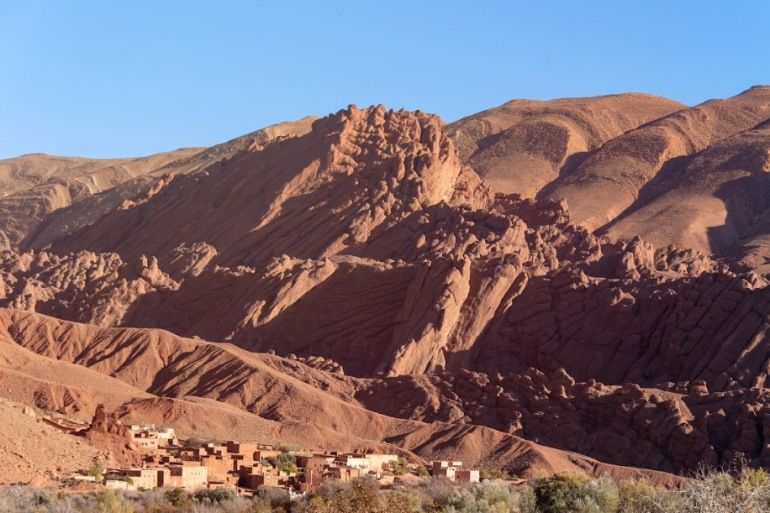
10-day Morocco Itinerary from Casablanca

Iceland Discovery

4-Days Cuyabeno
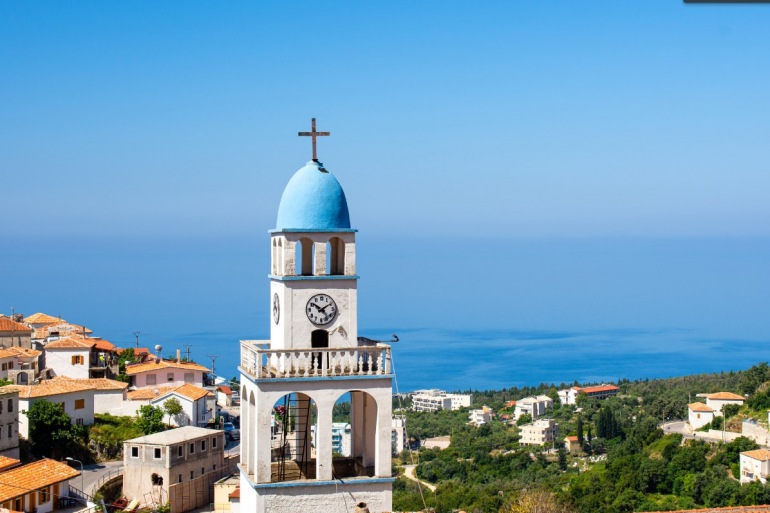
Discover Albania

Brazil (North): See & Experience it ALL in 13 Days, 1st Class Custom Tours

Northern Lights Escape
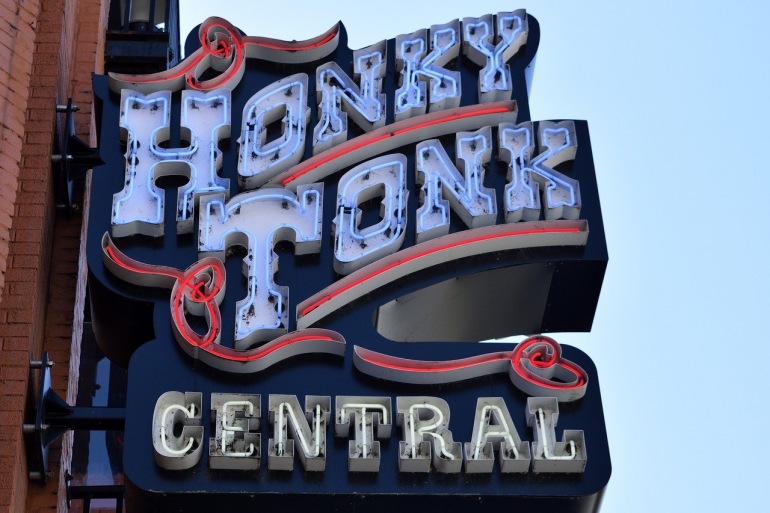
Music Cities USA featuring Memphis & Nashville
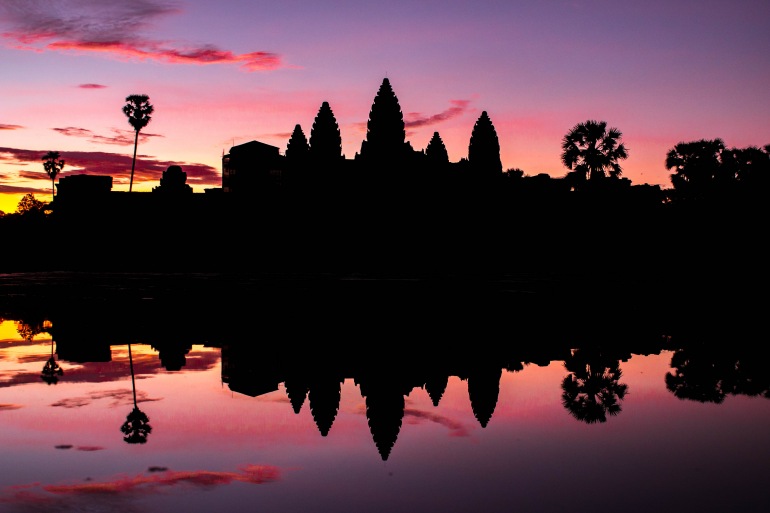
Family Trip In Cambodia
Member savings.
Sign in to see which companies give additional savings to Travelstride Members (it’s free)
- Group Tours
Compare with Rhino Africa Safaris
View all tour company comparisons
How well do you know the world?
Rhino africa safaris reviews & ratings, it was amazing.
I booked my 9 days holiday with Elizabeth Nkoana. It was amazing, professional...
Trip of a lifetime!
We recently booked and completed our second trip through Gareth De Jager at Icon Expeditions/Rhino Africa Safaris. Our trip this time was to Rwanda to see the mounta...
Wonderful experience
Simply stated, Rhino Africa did a wonderful job coordinating my two week vacation to South Africa with my daughter. Our consultant, Glen, was very responsive and ...
Amazing place!
Amazing place! Filled with people who aren't just nice t...
Siphamandla
This is the heart of African
This is the heart of African and modern south African culture it's a myst see place
See all Rhino Africa Safaris reviews

Unlock Community Benefits
Travel better together.
- Save favorite trips and itineraries
- Get insider insights
- Receive personalized recommendations
- ... and much more
More Details
Solo friendly.
- No single supplement
Travelstride featured in
About the company.
Rhino Africa Safaris is a travel company founded on a passion for Africa. Founded in 2004 we have rapidly become Africa's leading online tour operator. At Rhino Africa Safaris, we are passionate about the people, places and landscapes in Africa and are committed to responsibly promote and arrange travel to, within and from Africa. Our team of self-motivated and exceptional individuals work towards a common goal in a young, dynamic and entrepreneurial ennvironment where individuals are given the opportunity to excel.
Our team of 80 is based at our head office at 99 Hope Street in Gardens, Cape Town. We're in the hub of the city, with panoramic views of Table Mountain, Signal Hill, Lion's Head, the city and the harbour beyond. We also have a satellite office in London.We plan tailor-made itineraries to suit your exacting requirements at a price that is guaranteed to cost you less than if you booked your itinerary direct
We are the only African Tour Operator to offer financial protection because we know how important your travel investment is to you
Our team of expert travel consultants have extensive first-hand knowledge of all the top destinations, hotels and lodges in Southern and Eastern Africa
Rhino Africa provides complimentary financial protection. This provides Rhino Africa, and consequently our clients, with protection against financial loss as a result of insolvency by our suppliers (lodges, hotels, guest houses, cruise liners, tour operators and transport providers excluding international air travel). It is included in each booking completely free of charge. The financial protection covers all aspects of your travel package booked with Rhino Africa. We are the only tour operator in Africa to offer this protection and you do not get this protection if you book direct.
Rhino Africa Safaris consists of English, French, German, Spanish and Portuguese-speaking inbound Tour Operating Divisions as well as Icon Expeditions. Rhino Africa Corporate is our corporate travel division, providing a world-class travel solution to South Africa's top executives. Rhino Africa Safaris is also the holding company for one of Cape Town's top hotels - MannaBay.
Rhino Tripping is our in-house tours and transfers division, where expert guides offer fascinating day trips in the Western Cape.
Each year we send our team of experts on numerous educationals to enhance their product and destination knowledge so that we can offer industry-leading service to our valued clients around the world.
Rhino Africa Safaris Trips & Specials

Namibia Fly-in Tour

Cape Winelands - Garden Route - Safari

Manyara - Serengeti - Ngorongoro

Cape Town, Kruger Park and Victoria Falls

Gillian’s Classic African Safari

East Africa Bush and Beach Escape
Want a tailor-made trip instead, your trip, your way, planned by an expert:.
- You choose budget, destinations, activities, transport & lodging type
- Expert designs the itinerary for you, and once approved, takes care of logistics
Top Rhino Africa Safaris Trip Categories
Rhino africa safaris company ranking by category, similar companies, why travelstride, find your perfect trip, travel confidently.
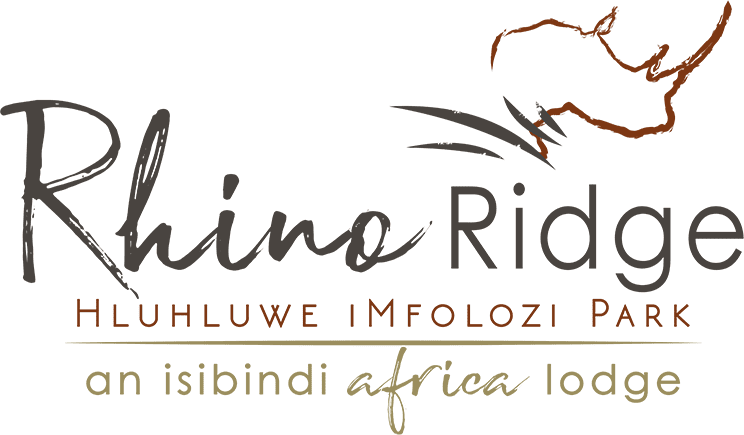
RHINO RIDGE SAFARI LODGE
The oldest game reserve in Africa
Mindful luxury and space in the Hluhluwe-Imfolozi Park
Capturing the suspension between earth and sky, this glass wrapped lodge rests on a ridge overlooking Africa’s oldest game reserve. Down below a waterhole, frequented by a diversity of wildlife, pulls your eye away from the extraordinary views, as you slow down and connect with the earth.
home of the rhino Rooted in Rhino Conservation
A big 5 wilderness reserve.
Rhino Ridge Safari Lodge is proud to be associated with the Hluhluwe-Imfolozi Park and its historical success story of rhino conservation in Southern Africa. We are honoured to call the “home of the rhino” our home too. We are the first luxury safari lodge to be established within this world renowned Big 5 game reserve which is also home to thriving populations of African wild dogs, lion, elephant and multitudes of other species.
“ The wilderness is our original home that still lingers in every human”
- Nunu Jobe | Isibindi Africa Trails
SAFARI LODGE
A bold contemporary space created in response to a dramatic setting
Pure and simple luxury, a natural celebration of light, shape and form
As our seasons change
SPECIAL OFFERS
Treat yourself
A celebration of utmost privacy and earthy luxury
A journey to renewal
SAFARI DRIVES
Sink into your seat as you set off for a few hours of unscripted adventure
In step with nature, a morning exploring and sharing untouched spaces in an iconic game reserve
WILDLIFE & CONSERVATION
A spectacularly scenic game reserve with a wealth of animals and habitats
A prime birding destination, home to over 400 bird species
Explore the beauty of the Zulu Kingdom and the KZN coastline
Stay with a Zulu Family and experience authentic African hospitality
JOURNEY WITH PURPOSE
Isibindi Africa is built on community-minded conservation, which means that the people, flora and fauna of a place, are an inherent part of the beauty and the sustainability of that place.
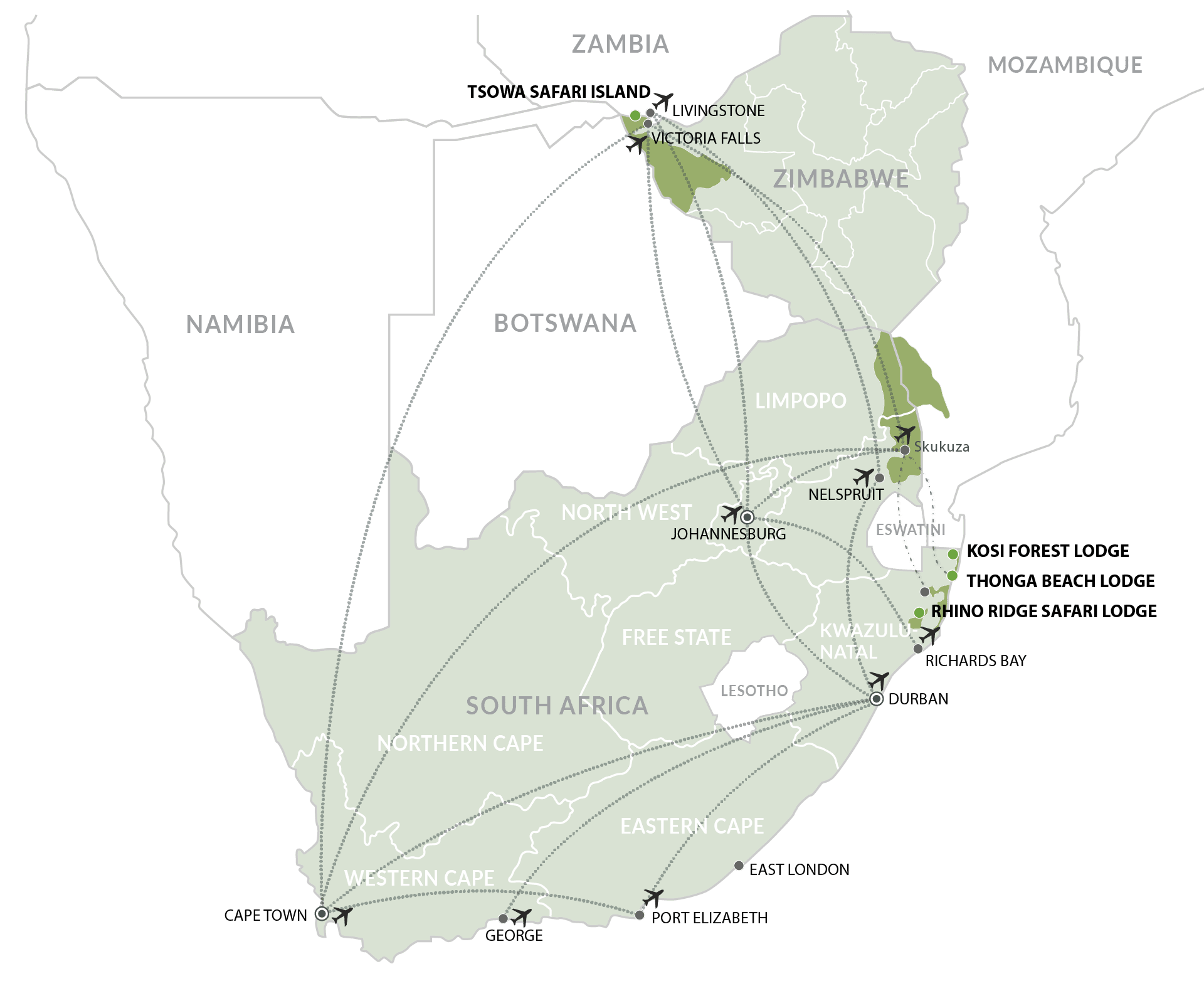
Experience a luxury safari in the Hluhluwe iMfolozi Park, situated in the province of Kwa-Zulu Natal, South Africa. The Hluhluwe iMfolozi Park has an interesting history as it is the oldest proclaimed game reserve in Africa and the former hunting grounds of the Zulu Royal family. The park is made up of two game reserves previously known as the Hluhluwe Game Reserve and uMfolozi Game Reserve.
The park has three entrances, making it easily accessible from Swaziland in the north, Richards Bay Airport 1.5 hours east and an easy 3.5 hour drive north from King Shaka International Airport situated near Durban.
Connecting to our eco-conscious community
Our purpose drives us all at Isibindi Africa Lodges, and so we are committed to incorporating eco-conscious systems and initiatives wherever possible, this includes:
Removing single use plastics which includes replacing plastic water bottles with a reusable bottle for each guest
Investing in large solar energy farms
Creating micro-economies in neighbouring communities to supply our lodges
Recycling unused lodge food into feeding schemes for neighbouring creches
Refusing to serve seafood that is not ethically harvested

GUEST REVIEWS

“One of the best places I have ever visited in my life”
September 2022
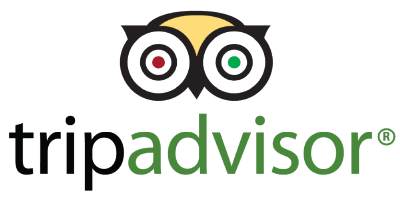
“We felt like royalty”
“it was all perfect!”
There is nothing to improve - it was all perfect!! I loved the lodge - every detail was carefully thought out from the drinks on arrival, the lemon towelettes after each game drive, the AMAZING food, the beautiful rooms, and the friendly staff.
Stayed June 2022
“If you are umming and aahing about going. Stop, and book”
This is the kind of stay that leaves you wanting everyone you know to go and experience! From the moment you arrive to fresh wet face cloths to the minute you leave with padkos in hand, every detail, every interaction, every meal leaves you feeling like you’re a favourite family member who has come to stay. Staff greeting you by name with smiles! But for me, the icing on the gluten-free cake was the meal planning around being gluten free. Not once did I look at anyone else’s food and feel I was missing something. Every meal was delicious. Malva pudding and carrot cake? What more could a girl ask for? Please extend my thanks again to the chefs! If you are umming and aahing about going. Stop, and book. Have i mentioned the fantastic accommodation, great game drives and the wonderful spa? Loved it!
November 2021
“The perfect honeymoon”
After an exhausting rollercoaster of a year re-planning our wedding twice we eventually made it to our perfect honeymoon. Rhino Ridge and all the staff were absolutely fantastic and we could not stop raving about it to friends and family. The service 10/10. The accommodation (Villa 6) 10/10. The food 10/10. The feeling of relaxation and pure luxury was priceless. Thank you to everyone at the lodge who made it a magical experience.
(South Africa) Stayed May 2021
“the best bush experience we have ever had”
Truly one of the best bush experiences we have ever had (and we have had many). Would not change a thing. Superb staff, incredible lodge and truly a memorable amazing experience in every respect. 10 / 10
Brett Yeatman
Stayed november 2021.
“Very special and memorable”
We stayed at the lodge for 2 nights and experienced exceptional service from the moment we arrived. The family unit was very clean and convenient. The game drives are unforgettable (Thulani is a great guide!), the food was excellent and all staff are very helpful and friendly. It was my husband's birthday and to our surprise a delicious cake was baked and presented at our dinner table which was absolutely amazing! As a result of my exciting stories at work about the whole experience, one of the colleagues travelled to the same lodge a week later and was even more excited! Thank you to all staff for making our visit a very special and memorable!
“Gem on planet earth”
I’ve visited many game lodges in South Africa, without a doubt you stand out. your hospitality is on another level. the game drives with well equipped and knowledgeable ranger (Simo Buthelezi you taught me so much ). This is now my new home for every bush visit. well done on keeping your doors opened and having the lodge fully functional during these trying times. well done to this gem on planet earth ….wow
October 2021
“I loved their professionalism and warm spirit”
On arrival at Rhino Ridge, we received a very warm welcoming from Bryce, Precious and Zanele. I loved their professionalism and warm spirit. The Lodge is magnificent with the views to die for! We arrived just in time for a delicious high tea and again the staff at the restaurant were amazing, especially Themba. I felt at home to the point that I remember everyone by their names.
South Africa Stayed August 2021
“Out of This World”
Early january 2020, we spent two nights at this lodges within the Hluhluwe-Imfolozi NP. The rooms and food were excellent, and the views from the lodge and infinity pool are top! What a view on the rolling hills of Zulu land. Having experienced the game drives in the private reserves of Kruger, the games drives here were somewhat less exiting as the cars cannot leave the roads in search of animals. This being said, the safari walk is a MUST DO. Highly recommended in the morning. We got up at 4:30am and were walking at 5:00am. The experience of the silence and the sun rising behind the hills is unforgettable. Sitting within 50 metres of rhino's is out of this world.
Kristof_and_family
Beringen, belgium stayed january 2020.
Rhino Ridge Safari Lodge
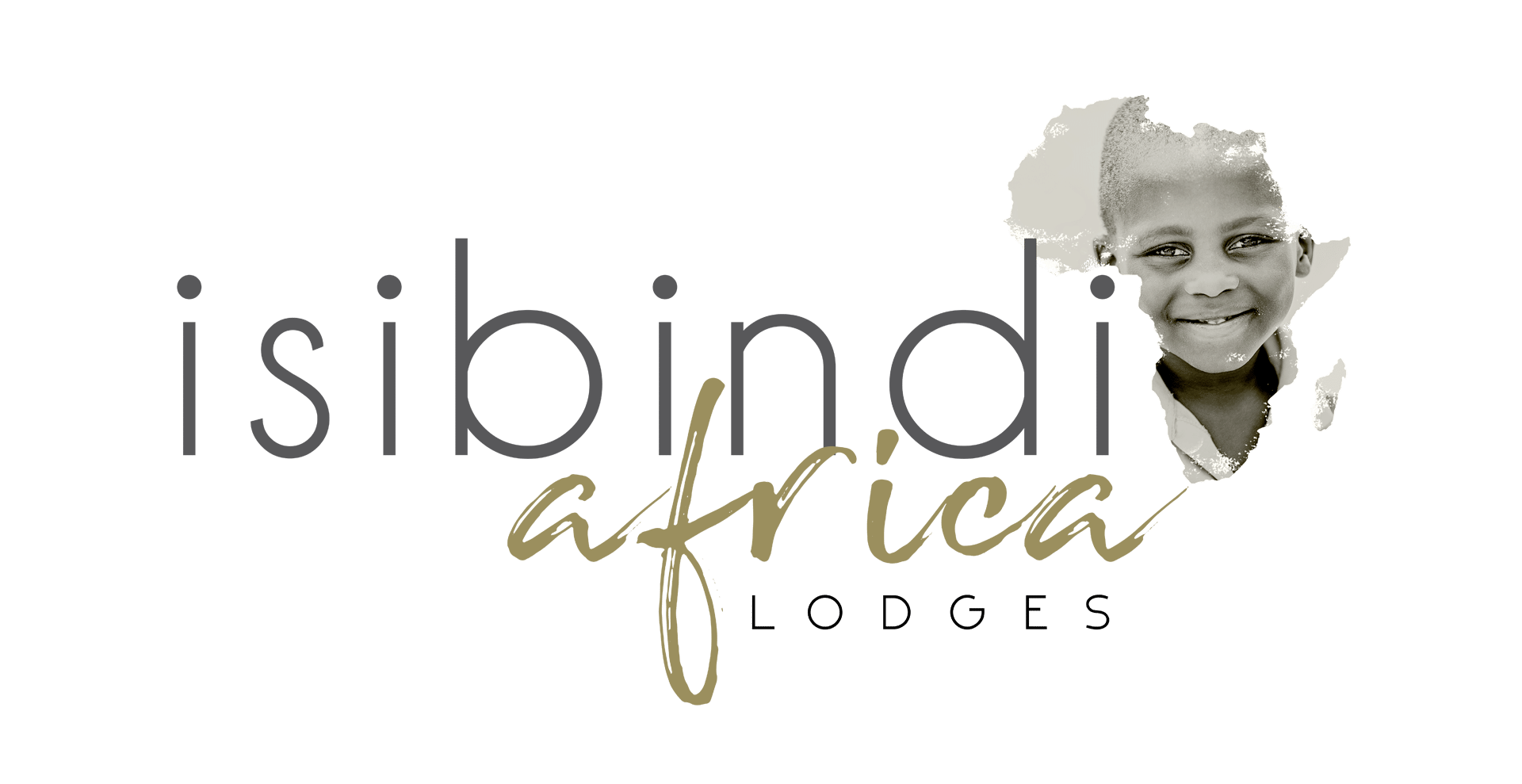
Join our mailing list to receive last minute availability, specials and more!
- MERCHANDISE STORE
- USA SHOW SCHEDULE
- CUSTOMISE SAFARI

Hunting Rhino in South Africa
Hunting rhino in south africa - hunter's notes.
Hunting rhino in South Africa is the greatest heart-pounding experience and has traditionally been one of the biggest milestones of the Big Game hunter’s achievements when hunting in Africa to complete their big five collection. This majestic animal is known to be the second-largest land animal in the world and can be quite elusive- ensuring the most remarkable and rewarding hunting experience!
In the past, due to the demand for rhino horn, Rhinos have almost been hunted to extinction, but thanks to hunters and conservationists, white rhino numbers increased significantly in the last few years. Unfortunately, Black rhino is still a protected species.
Both Rhino species can be hunted, however the Black Rhino hunting permits requirements are much stricter than those of the White Rhino. When booking a rhino hunt, it is of utmost importance to book with an outfitter that has a good reputation and who specialises in big game hunting.
Somerby Safaris conducts rhino hunting in pristine, large hunting areas in South Africa, offering you the best opportunity to successfully hunt this remarkable trophy.
We pride ourselves not only in top trophy quality, but also in the most memorable, authentic African hunting experience – ensuring that every hunt is an experience you will never forget!
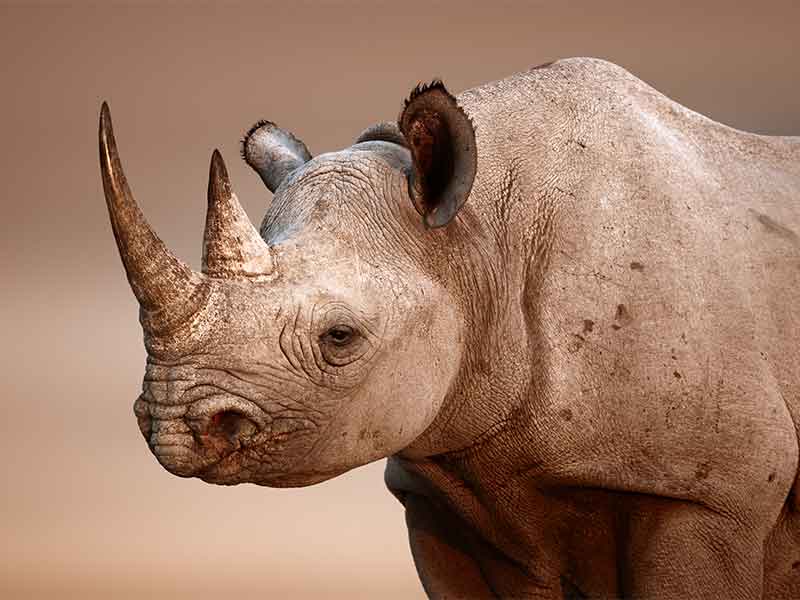
Hunting Rhino in South Africa - Characteristics
Rhinoceroses are large, herbivorous mammals identified by their characteristic horned snouts. The word "rhinoceros" comes from the Greek "rhino" (nose) and "ceros" (horn). Rhinos are one of the members of the big 5.
Rhinoceroses are some of the largest remaining megafauna: all weigh at least one tonne in adulthood. They have a herbivorous diet, small brains (400–600 g) for mammals of their size, one or two horns, and a thick (1.5–5 cm), protective skin formed from layers of collagen positioned in a lattice structure. They generally eat leafy material, although their ability to ferment food in their hindgut allows them to subsist on more fibrous plant matter when necessary.
Hunting Rhino in South Africa - Shot Placement and Caliber
The White Rhino is an extremely large animal and can weight up to 2 tons. Due to their very thick and tough skin, a 375 H&H is by law the minimum caliber rifle that should be used for hunting rhino in South Africa. Because their skin is so thick, larger calibers such as the .416 to .458 calibers are better to ensure proper penetration.
The best ammunition to use for hunting rhino in South Africa is a premium, good quality, solid bullet such as Barnes solids in 300 grains and bigger weight. Alternatively, you can use any premium solid bullet.
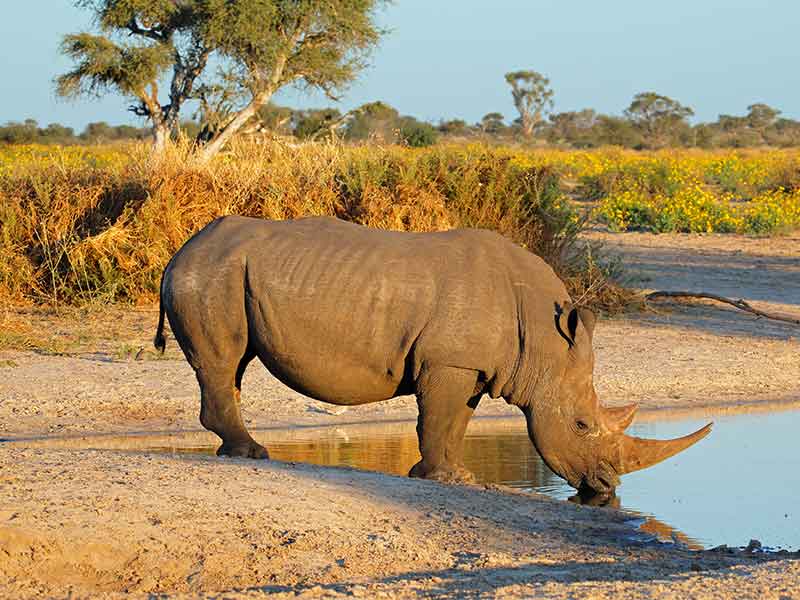
Hunting Rhino in South Africa - Gallery
Hunting rhino in south africa - enquire.
Somerby Safaris team is ready to assist to plan your dream African hunting safari! We will make sure that your African safari experience is the most exciting adventure and that it will remain etched in your memory books for life! Please provide us with the following information and then we will get back to you within 24 hours!
Somerby Safaris will not share your personal information with any third-party organisations.
Read our reviews
Somerby Safaris provides excellence and is at the top of their field. From arrival to departure Somerby Safaris is driven to be the best!
I have been laying over in cities all over the world for more than 30 years and have had some really great times. But I have 4 words to describe my short time with Somerby Safaris, BEST LAY OVER EVER!!!!!
Have hunted Africa 6 times – First 5 with other outfitters and first one with one with Somerby; 6th Safari beats the first 5, Somerby is the best!
Absolutely one of the best hunting experiences of my life. For anyone looking to book a serious African safari, do not hesitate to contact Somerby!
It’s not just the doing of a thing, but how one does a thing that at the dusk of memory takes one back to the sharp moment of action and then a whiskey and a fire shared with a trusted PH ... that is the true and the beautiful essence of “Safari,” at least for me.
Somerby is a wonderful professional organization to work with, hunt with and just know. Booking your first overseas hunt is a huge decision but you can rest assured that Somerby has all the angles covered before during and after the hunt.
Our hunting experience with Somerby created memories and trophies we will cherish for years. Somerby is second to none. Don't wait, don't think twice - Book NOW!
I have hunted with other hunting outfitters in the US, and Canada, none have compared to Somerby!
As my group and I were on our way back home we were already planning for the trip back to Somerby safari
This was without a doubt, the best hunting trip we have taken. We have been taking hunting trips all over the US and Canada for the last 30 years. This trip topped them All. Somerby's far exceed our expectations and we are already planning our return. If you have ever considered an African Safari, call Somerby's you will be happy you did.
Somerby Safaris is first class all the way! I will be back to Africa and Somerby Safaris is the only Safari for me! Hunting with Somerby Safaris was the best trip of my life! All I can think about is going back! - Thank you, Somerby, for a wonderful Safari!
If you are looking for an outfitter that doesn't treat you like a client but a friend, look no further.
VIEW ALL REVIEWS
Hunting Packages
Africa Big Five Hunting Package
Dangerous Game Hunting Packages
Plains Game Hunting Package
Family and Couples Hunting Packages
Hunters Information
Hunting Areas and Lodges South Africa
Non Hunting Activities
Hunting Safari Information South Africa
South African Hunting Safaris – Rifles
Price List & Daily Rates
USA Annual Tour Show Schedule
About Somerby Safaris
Why book with Somerby Safaris?
Read our Hunting Reviews
The Somerby Team
Contact Us:
Drom & Sune Beukes
Drom: +27 72 118 4800
Sune: 011 27 79 873 5154
Office: 011 27 82 207 7576
USA: 1-469-559-2669
(Cell – Jan & Feb only)
USA: 815-361-9079 (Fax)
Price list 2024
InAfrica Tours Brochure
Subscribe to Somerby Safaris Newsletter
Schedule a zoom meeting.

Hunting Rhino in South Africa | Resources
© all rights reserved somerby safaris.

- Ready-made safaris
- Experiences
- Special offers
- Accommodation
- Start planning
- Booking terms
- When to go on safari - month by month
- East or Southern Africa safari?
- Solo travellers
- Women on safari
- Accommodation types & luxury levels
- General tips & advice
- All stories
- Afrika Odyssey Expedition
- Photographer of the Year
- Read on our app
- 2024 entries
- 2024 details
- 2024 prizes
- 2024 entry form
- 2023 winners
- Collar a lion
- Save a pangolin
- Rules of engagement
- Job vacancies
- Ukuri - safari camps

The state of Africa’s rhino
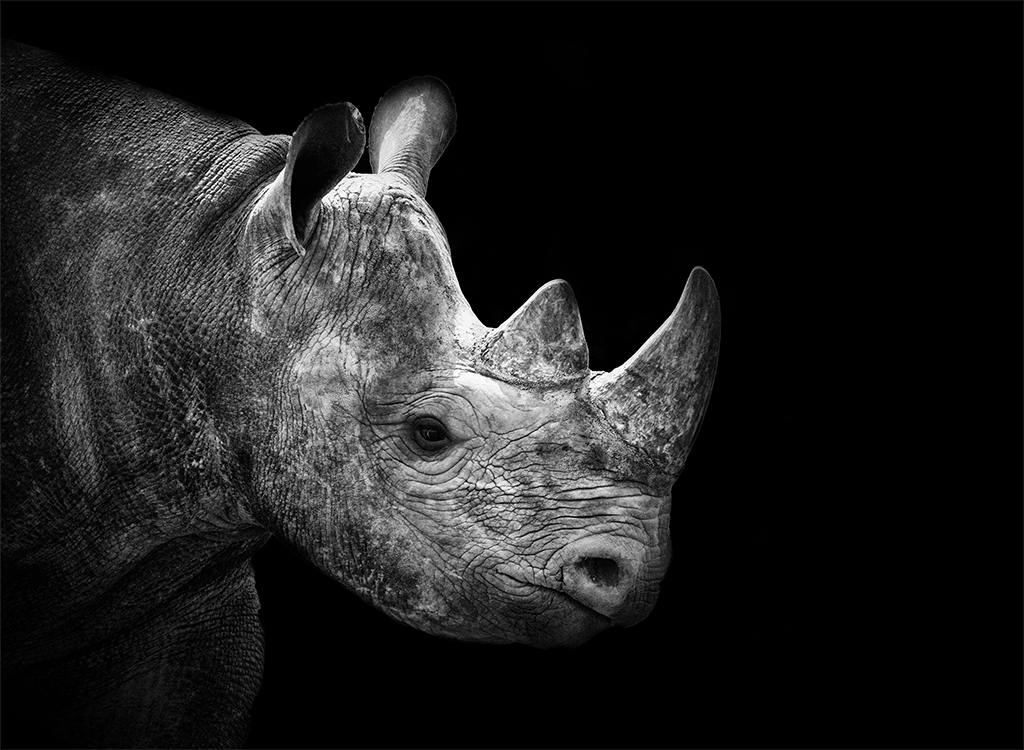
In November 2022, the 19th meeting of the Conference of the Parties (CoP19) to the Convention on International Trade in Endangered Species of Wildlife Fauna and Flora (CITES) will be held in Panama. In preparation, the African and Asian Rhino Specialist Groups of the International Union for Conservation of Nature (IUCN) and non-governmental trade monitoring organisation TRAFFIC were tasked with compiling a report on the status of the world’s rhinoceros species. The resultant report’s 90 pages contain the most up-to-date and comprehensive analysis of rhino numbers, trends, poaching incidents, conservation measures and trade at a national and international level.
This article summarises the report’s main findings on population numbers and poaching statistics, which are accurate up until the end of 2021. Though the report contains information about African and Asian rhino species, we focus purely on the data for African species. All numerical data, such as population counts, should be considered estimates within a confidence interval unless otherwise stated. Poaching rates are based on the number of detected carcasses, adjusted for imperfect carcass detection.
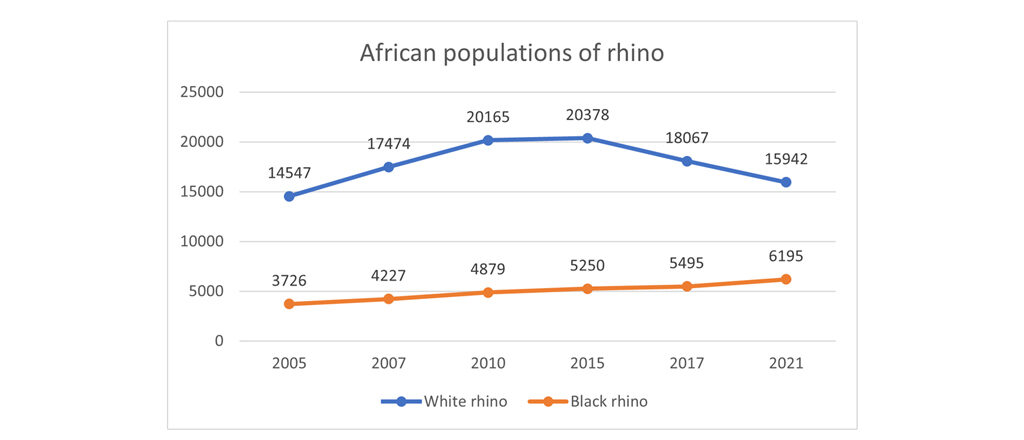
In summary:
- There are an estimated 15,942 white rhinos in Africa, 11.8% lower than the 18,067 individuals at the end of 2017. Since 2012, white rhino numbers on the continent have declined by 25.2%.
- Four range States conserve the largest proportion of the continent’s white rhinos: South Africa (81.3%), Namibia (7.7%), Kenya (5.5%) and Zimbabwe (2.6%).
- Total black rhino numbers have risen 12.2%, from an estimated 5,495 in 2017 to 6,195 at the end of 2021.
- The four range States that conserve the largest proportion of the continent’s black rhinos are Namibia (34.8%), South Africa (33.2%), Kenya (15.1%) and Zimbabwe (9.9%).
- 2,707 poaching incidents were recorded in Africa from 2018 to 2021. 90% of these occurred in South Africa. This represents an overall decline from 3.9% of the continental population in 2018 to 2.3% in 2021. Peak poaching levels of 5.3% were observed in 2015.
- Several countries, including South Africa, recorded a decrease in poaching during the 2020 pandemic but then reported a rise again in 2021. However, the report acknowledges vigorous law enforcement and conservation efforts within several range states.
- The number of horns entering illegal trade from 2018 to 2020 was estimated at between 4,593 to 5,186, with over half recovered through law enforcement activities. The 2018 to 2020 figures represent the lowest annual estimate in the past decade. However, this could be partly attributed to the 2020 pandemic.
- In terms of illegal trade volume, the seven countries most affected by the illegal trade in rhino horn from 2018 to 2020 are (in order): South Africa, China, Vietnam, Malaysia, Mozambique, the United Arab Emirates and Qatar. (Total weight and number of horns seized in each country, as well as seizures where the country was implicated as part of the illegal supply chain.
- Botswana was noted with concern due to the significant decline in the rhino population and unconfirmed reports of high levels of poaching in 2021.
- From 2018 to 2021, there were 1,588 arrests made for crimes involving rhinos across Africa. 751 of these cases were prosecuted, and just 300 resulted in convictions.
- South Africa and Namibia reported a total of 236 white rhinos and eight black rhinos legally trophy hunted from 2018 to 2021.
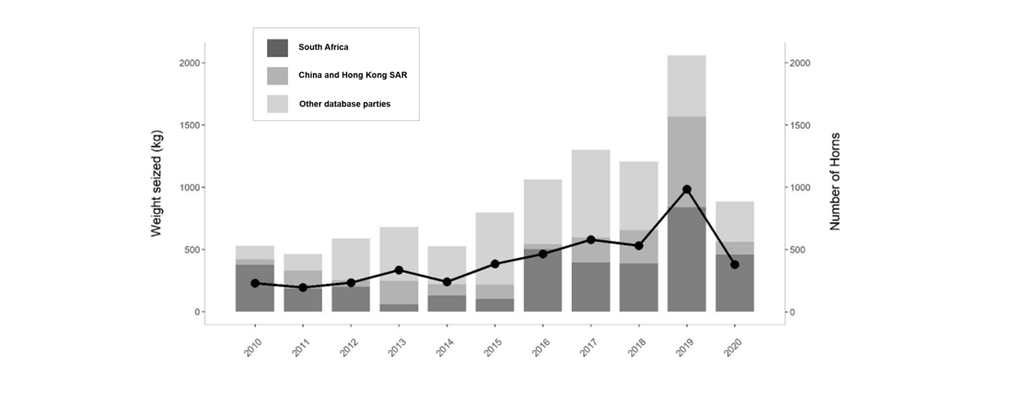
South Africa
South Africa is home to the majority of white rhinos on the continent; as such, the country’s conservation contributions exert considerable influence on continental trends. White rhino populations in South Africa declined from 15,625 at the end of 2017 to 12,968 at the end of 2021, the lowest population since pre-2005. More than half of these are privately owned. While the country’s white rhinos accounted for 86.5% of Africa’s population in 2017, this has declined to 81.3% in 2021. The country’s total black rhinos are estimated to number 2,056 individuals, an increase of ten since 2017.
South Africa experienced peak poaching levels in 2014 when 1,215 rhinos were killed, after which poaching incidents gradually declined. 2020 saw a decade low of 394 rhinos killed, which increased to 451 in 2021. As of August 2022, 259 rhinos have been poached throughout the country for the year, most of which were killed in KwaZulu-Natal province. From 2018 to 2020, 1,116 whole horns were seized, representing at least 558 individual rhinos and around 4% of the surviving population in 2021.
Trophy hunting of both rhino species is legal in South Africa and Namibia. During the reporting period, 72 rhinos were legally trophy hunted in South Africa in 2018, 58 in 2019, eight in 2020 and 102 in 2021. This equates to a harvesting rate of between 0.37% and 1.78% of the country’s remaining population. Namibia reported that 17 white rhinos were trophy hunted in 2019 and 22 in 2021, along with three black rhinos from 2018 to 2021. The report notes that the revenue raised from these trophy hunts is important in supporting conservation costs, with hunting revenue ranging from US$15,000 to US$300,000 per rhino (black rhino hunts being substantially more expensive than white) in Namibia (South Africa did not report prices for trophy hunts).

Namibia reported an increase in black and white rhino populations over the four-year reporting period, from 975 to 1,234 white rhinos and from 1,857 to 2,156 black rhinos at the end of 2021. After South Africa (which reported 90% of all poaching incidents in Africa), Namibia recorded the second highest poaching figures in 2021 – 40 rhino carcasses detected, equating to 8% of approximately 554 rhinos poached across the continent. At least 93 rhinos were poached in 2018, 56 in 2019 and 40 in 2020. A total of 32 seizures yielded an estimated 57 whole horns from 2018 to 2021. Though not included within the report, recent numbers from Namibia indicate a concerning rise in poaching incidents for 2022, which experts suggest is due to a shift in focus by criminal syndicates. By August 2022, 48 rhinos had been poached in Namibia, 11 of which were killed over two weeks in June.
During the reporting period, Namibia reported an estimated US$1,237,575 raised through trophy hunting. The country has once again submitted a proposal for the downlisting of white rhinos from Appendix I to Appendix II (South Africa and eSwatini are currently the only two countries where white rhinos are listed on Appendix II). This would ease export restrictions for legally hunted trophies and the movement of live animals. The ten-page proposal indicates that the movement of live animals would be conducted only for in-situ conservation.
Kenya has the third highest number of rhinos in Africa. At the end of 2021, it was home to 15.1% (938) of Africa’s black rhinos and 5.5% (873) of the continent’s white rhino, including the last two remaining northern white rhinos ( Ceratotherium simum cottoni ). Both black and white rhinos have increased overall since 2017, from 745 black rhinos and 513 white rhinos. Kenya’s black rhinos are the eastern black rhino subspecies ( Diceros bicornis michaeli ), making it home to the largest population of the least numerous black rhino subspecies.
There were no known poaching incidents in Kenya in 2020, but six rhinos were poached in 2021. Before that, four carcasses were detected in both 2018 and 2019. Three seizures representing an estimated four whole horns were made from 2018 to 2020.
Zimbabwe’s rhino populations have increased since 2017, from 367 to 417 white rhinos and from 520 to 616 black rhinos at the end of 2021. Poaching levels peaked in 2019 when 82 carcasses were discovered, followed by 12 in 2020 and four in 2021. Six seizures were made over a three-year period from 2018 to 2020, amounting to an estimated 19 whole horns. The country is in the process of dehorning its entire rhino population.
Botswana did not provide the compilers of the report with information on population breakdowns, poaching data or law enforcement activities for 2021 – the only rhino range state not to do so. Their rhino population has been decimated from 452 white and 50 black rhinos in 2017 to 242 white and 23 black rhinos (a 46% and 54% decline, respectively) in 2021. Poaching incidents began to escalate in 2017 when nine rhinos were killed, followed by 18 in 2018, 31 in 2019 and 55 in 2020. The authors suggest that poaching levels in 2021 were likely similar to those of 2020. Two seizures equating to four whole horns were made from 2018 to 2020.
Despite this, Botswana has also proposed downlisting white rhinos to Appendix II.
Mozambique is an important transit country in the illegal trade of horn, supplied by poaching incidents in neighbouring South Africa. 75% of the seizures in the country (where the destination could be identified) were destined for Vietnam. The report did not mention the recent translocation of over 40 white and black rhinos to Zinave National Park from South Africa in 2022.
Additional country information in rhino populations
A new white rhino population of 30 individuals from South Africa was established in Akagera National Park in Rwanda at the end of 2021. The country’s reintroduced black rhino population has grown from 19 at the end of 2017 to 28 at the end of 2021. Zambia’s black rhino population grew from 48 to 58 in four years, but the white rhino population is now estimated at just eight individuals. Uganda’s rhinos were driven to extinction in the 1980s, but a small sanctuary is now home to a growing population of 35 white rhinos. Tanzania’s white rhino population is extinct, but the country reported an increase in black rhinos from 160 to 212. This can be partly accounted for by the translocation of rhinos from South Africa to Serengeti National Park in 2019. eSwatini (formerly Swaziland) has a population of 98 white and 48 black rhinos. The countries above all reported zero detected poaching incidents in 2020 and 2021.
A full breakdown of Africa’s rhino populations by country can be found in Table 2 on page 25 of the report.
Final thoughts on the state of Africa’s rhinos
The new report by the IUCN and TRAFFIC contains a comprehensive analysis of rhino numbers and poaching statistics across Africa and Asia but also details conservation measures, horn stockpiles, national and international law enforcement efforts, education initiatives and challenges. The exact impact of COVID-19 restrictions on the rhino horn trade is unknown. However, Sabri Zain, TRAFFIC Director of Policy, emphasised that “2020 did represent an abnormal year with low levels of reported illegal activity, law enforcement, and government reporting”. As such, the report strongly urges the continued and consistent monitoring of illegal trade.
Furthermore, most of the remaining rhinos are found in small populations, with a median reported population size of nine. 94.7% of Africa’s rhino populations comprised fewer than 200. As a result, they are particularly vulnerable to stochastic processes such as droughts and disease. While the overall decline in poaching is encouraging, it remains the single greatest threat to Africa’s rhino species, and recent increases are a cause for considerable concern.
Further Reading
For a better understanding of CITES, read this: What exactly is CITES and how does it work?
For more on Botswana’s apparent lack of transparency, see Rhino poaching in Botswana – why the smoke and mirrors?
On Kruger National Park rhino poaching: Kruger rhino poaching update: 75% population reduction in 10 years
HOW TO GET THE MOST OUT OF AFRICA GEOGRAPHIC:
- Travel with us . Travel in Africa is about knowing when and where to go, and with whom. A few weeks too early / late and a few kilometres off course and you could miss the greatest show on Earth. And wouldn’t that be a pity? Browse our ready-made packages or answer a few questions to start planning your dream safari .
- Subscribe to our FREE newsletter / download our FREE app to enjoy the following benefits.
- Plan your safaris in remote parks protected by African Parks via our sister company https://ukuri.travel/ - safari camps for responsible travellers
We're an eclectic pack of safari experts, storytellers, admin and tech nerds and digital natives whose sole mission is celebrating Africa and doing good. We do this by creating life-changing, responsible safaris just for you, publishing informative, factual articles about Africa's incredible natural wonders and raising donations for worthy causes. This MANIFESTO explains our approach to travel and conservation.

Friend's Email Address
Your Email Address
I went on a budget and a luxury safari in Africa. Here's how they compare — and the one thing you really need to look for when booking.
- I have been on two glamping safari trips in Africa on two very different budgets.
- My all-inclusive stay was great but my cheaper glamping experience was fine, too.
- Private game reserves are actually the most important thing to splurge on, not accommodations.

I've been on two African safari trips . Both involved glamping but on completely different budgets.
My first more affordable trip, a lodge in South Africa with separate safari excursions, cost me about $1,100. My second, an all-inclusive lodge in Tanzania, cost me about $4,000 after a 50% off deal.
Here's how the two compare and what I think you should look for before you plan an African safari .
My affordable safari experience was at Jackalberry Ridge, where some tents cost $80 a night.
The first time I went on a safari, I went to Kruger National Park in South Africa. I didn't book a tour package, instead opting to stay at affordable lodging and book safari day trips to the park.
I stayed five nights near Kruger and one night in Johannesburg before my flight home. I spent around $1,100 for lodging, safari tours, a rental car, and food (not including flights).
After landing in Johannesburg, I rented a car ($130 for five days) to drive to my lodging in Marloth Park, a town bordering the edge of Kruger National Park.
I was staying at Jackalberry Ridge , a self-catering accommodation with no on-site restaurant, no room service, and limited housekeeping.
The one-bedroom tents at Jackalberry Ridge go for as low as $80 a night, and two-bedroom tents go for $135.
When I checked in late, there was no one at the reception desk — just an envelope with my name on it containing my keys and a map.
My main tent felt pretty spacious, with a king bed and a living-room area.
I had booked a two-bedroom unit (two tents), but my friend couldn't come at the last minute. Since I couldn't change the reservation, I still stayed in the two-bedroom unit and my friend paid her share.
The campsite came with a small pool to dip in, but it was covered as the weather was pretty cold.
Each unit had a private bathroom and kitchen in a building separate from the tents, so I needed to leave my tent to use the bathroom at night.
The bathroom was standard, with a tub, shower, and toilet.
This is glamping, so I had access to running water and a flushing toilet. I had hot water, but I found it went from scalding hot to cold in a few seconds.
I ended up taking quick showers and just washing my hair with cold water, which wasn't ideal since it was a little chilly in the morning.
It's also worth noting that Jackalberry Ridge was renovated recently, so the issue I had with hot water may have been fixed now.
I also had access to a kitchen in the same building as the bathroom.
The kitchen was well-equipped with things like pots, a microwave, and a sink, so I could cook meals or heat up leftovers.
I signed up for a couple of day safaris and did one at night.
Although I had a rental car and could've done a self-drive safari around Kruger, I didn't trust myself to spot animals while focusing on the roads.
Instead, I signed up for a couple of day safaris and one night safari. The safari tour prices often don't include the park entrance fee (about $25 per person per day), which I paid when I got to the entrance.
My three safari trips and park fees came to around $280.
I got to see zebras, giraffes, and more.
I saw a lot on the safari, including zebras, impalas, kudus, and giraffes. I saw lions and a leopard, although only from afar with binoculars. I even got a glimpse of the elusive rhinoceros.
I also spent one day taking another popular day trip in the area, the Panorama Route. This scenic road goes past Lisbon Falls and the beautiful Blyde River Canyon. The guided tour was $110.
As far as my very first safari trip goes, it was great. I got to see the Big Five , even though some of them were pretty far away.
For my next safari trip, I leveled up.
I saw a Travelzoo deal for an all-inclusive safari at Taasa Lodge , a five-star luxury safari in Tanzania.
The deal was $6,000 for two people for a whole week — the lodge is usually $12,950 for two for seven nights. It was still a splurge, but I'd be saving more than 50% on a bucket-list experience.
The package came with seven nights of lodging, two safari activities a day, three daily meals, and drinks.
Still, we spent more than the original advertised price. There are obligatory "daily government park fees" and "daily concession fees" that added about $893 per person to our bill.
We also had to take a regional flight to get to Taasa, which was more expensive than my rental car in South Africa.
To redeem the Travelzoo deal, we had to complete our booking through a specific travel agency.
We ended up opting for an all-inclusive add-on package which includes the $893 fees above, domestic airfares from Arusha to Taasa (which would already cost around $600), and our agency arranging our Tanzanian tourist visa and airport transfers. The add-on also included extra activities at the resort (more on that later).
Overall, we paid $1,715 per person on top of the $3,000 each for the lodge stay.
I hadn't anticipated paying so many extras, but it was nice to have someone take care of the logistics of getting to the resort.
My tent was luxurious and equipped with a comfortable king bed and a large living room.
When I arrived at the lodge, the staff greeted me with a glass of juice and a wet towel to refresh myself.
My tent was quite spacious. I especially liked that it had a desk and plenty of outlets I could use to charge my electronics. Our bathroom was behind our bed, and I was glad it was inside the tent this time.
We also got a butler who kept track of our schedules and made sure we had what we needed.
The bathroom felt spacious, with two sinks and a shower.
The shower's hot water was great and we had double sinks we could get ready at.
Another perk of the lodge is that we could have staff do our laundry every day, which meant we could pack less clothing.
There's a main lodge with a communal living room, dining area, and bar.
We got breakfast at the buffet in the main lodge unless we were going on a morning safari.
Most people ate dinner in the dining room, but we could've requested to have food brought to our tent.
We also passed a small pool next to the main lodge.
The pool was on the small side, but certainly had great views.
I didn't end up using it as my afternoons were filled with safari, and the mornings and evenings were chilly.
On the mornings with an early safari, we had a simple breakfast next to our Land Cruiser.
Safari breakfasts consisted of hard-boiled eggs, yogurt, doughnuts, bacon and sausage, fruits, and orange juice. Staff also made French-press coffee, which we could spike with cream liqueur.
Our Land Cruiser had a cooler of beers and sodas in the back, too.
At the private game reserve, we got pretty close to wildlife.
Taasa is located inside a private game reserve, which means staff can pretty much drive anywhere within it. This was a huge leg up from my day trips in Kruger National Park on my last safari.
Inside national parks like Kruger or Serengeti, you're only allowed to drive on designated roads for safety reasons (both for the tourists and the animals).
But in a private reserve, guides can drive offroad. Plus, the guides communicate with each other when they find something special.
We saw a bunch of animals in the private reserve and Serengeti.
We also left the reserve to spend a couple of days going into Serengeti National Park, as there were things you could only find there instead of within the private reserve.
For example, I'd planned my trip to take place during the Great Migration, and I wanted to see wildebeests crossing the Mara River.
We also went to Serengeti to find rhinoceros and hippopotamus.
Every dinner at the resort consisted of three courses: soup, an entrée, and a dessert.
The main course was usually some type of Western food, and there was always a vegetarian option.
It would've been nice to be offered more typical Tanzanian dishes, though. For me, part of the fun of traveling is learning about different countries' cuisines.
I also had access to an open bar in the main lodge. Staff could make simple cocktails, and there was lots of beer and wine. The drinks were all included with the price of the stay (except for fancy Champagnes and select wines).
One morning, we had a special breakfast on the plains.
On one day of the trip, we had a special bush breakfast. It was one of the extra activities we got with that special add-on package.
Instead of our usual safari breakfast, we had freshly prepared omelets in the wild.
We also got another special treat in the bush that morning — a toilet!
When you're offroading looking for wild animals, you can end up pretty far from a proper toilet.
On most safari days, the car stops (when guides think it's safe), and people go behind the car to do their business.
This was the only time we had this portable toilet while out on a safari. On my budget safari day trips at Kruger, we'd have to wait until we reached a rest-stop facility.
Again, we spent a lot of time watching lions.
After breakfast, we were back in safari mode.
We found a family of lions, and as we were in the private reserve, we were able to stay and watch the cubs play for quite a while.
At Kruger, when lions are spotted, traffic starts backing up on the road as all the safari cruisers stop to look, so you can't stay too long.
Here, we knew no one else would be coming.
On a different morning, our guide got a tip that another car had found a leopard sleeping.
The communication between guides in the private reserve paid off when one spotted a sleeping leopard.
When our group arrived, the leopard was napping on the tree next to his catch. Eventually, it came down, and we got a better look.
Our trip ended with a great happy hour and outdoor dinner.
Other activities that were part of our add-on package included a visit to a Maasai village in Kenya and a special happy hour and barbecue dinner.
And, for our journey home, the travel agency took care of everything, including transfers, until we boarded our international flight.
My big takeaway is that it's really worth paying to be inside a private reserve.
In my opinion, the difference between these two safari trips that's the most worth paying for is being in a private reserve.
After all, the main reason I fly to Africa is for the safari, not the glamping.
I much preferred my lodging at Taasa, mostly because of the bathroom. But if I hadn't had the 50% off deal, I'm not sure the full price would've been worth it.
Still, it was a wonderful experience, and if I had more money, I may feel differently. Even so, the budget glamping was pretty comfortable and just fine for a week.
But again, as far as the safari experience goes, the private reserve is hard to beat. Being able to go offroading and get closer to the animals is quite the experience.
And if luxurious lodges are out of the question, private reserves can also be visited more affordably. Some lodges inside private reserves, like Shindzela or Rhino River Lodge, can cost around $250 per person per night.
- Main content

Top 10 Safari Parks in Africa
C an't decide where do you want to start your next (or first) safari in Africa? We collected the top 10 safari parks in Africa places to see wild African animals in their natural habitat. If you want to know what to be on the lookout for, read our article on the top 10 safari animals you can spot on your travels!
There's always more to explore so feel free to check out our article on the top 10 countires for safaris! For some Safari fun you can check our blog post on how a Family Safari completely errupted into chaos!
Read ahead or jump to any section that interests you:
Introduction
A safari (Swahili: journey) in one of Africa's national parks is an exciting thing: many people can observe a larger number of wild animals and even have the oppurtunity to see the famous Big 5 of africa.
The focus is on the savannah and bush landscapes, where savannah elephants , lions , buffalos , and other well-known wild animals feel at home.
Whether it's Africa for the first time or safari connoisseurs, there should be something for everyone. And it attracts attention: There is no best destination in Africa, but there are the best destinations.
So, where should the next safari lead?
10th place: Amboseli National Park, Kenya
Where else can wild animals be observed in front of one of the most famous mountains on earth? The Amboseli National Park at the foot of Kilimanjaro in Tanzania serves both as a postcard motif for Africa and as a photographic object. Giraffes, elephants and all sorts of other wild animals strut in front of the snow-covered summit of the "Kili" and give great photo motives.
Ancient elephants still live in the park. This allows visitors to observe the almost intact social behavior of the pachyderms in their herds.
The Kilimanjaro usually wraps itself in thick clouds during the day. The chances of seeing it are best in the morning and evening.
9th place: Addo Elephant National Park, South Africa
Number 9 on the top 10 safari parks in Africa is Addo. Known for, as the name suggests, its elephants, the Addo is more than a convenient destination near South Africa's Garden Route. The park is home to lions again after a resettlement program; black rhinos and leopards are also found here. Due to the extension to the south, the coast with its sharks and whales is also part of the park, which now advertises with the "Big 7".
In conclusion, the park is ideal for exploring with your own (rental) car. Please make sure to ask in advance what you have to consider for the self-drive safari.
In addition, holidaymakers in their cars should ensure they do not run over pill turners (African dung beetles), hundreds of which run across the roads depending on the weather.
8th Place: Etosha National Park, Namibia
Namibia's most important park is home to countless wildlife, including the white and black rhino who are critically endangered, something you can read more about in one of our other articles about these ancient and disappearing creatures. There are also several predatory cat species and many antelopes. "Etosha" means "big white square," which describes the landscape well. The vegetation is extremely sparse; in the dry season, many animals gather at artificial waterholes.
In the dry season, many animals can easily be observed at the park water holes and camps. 114 different species of mammals live in the park.
Every coin has two sides: The park is completely fenced in and cuts the animals off their original routes in search of water in the Kuene region. The waterholes are not comparable to the actual environment and natural migration behavior for true lovers.
7th place: Tarangire National Park, Tanzania
The Tarangire National Park is one of the most underestimated parts of the continent. Many visitors only make a short stop at the Serengeti or do not ebaobabven include the national park in their travel plans. But the park is home to large herds of elephants and many other species in a remarkable landscape of boabab trees.
The park is known for its elephant herds, which run through a prehistoric landscape along the Tarangire River.
The park is home to the tsetse fly, which transmits sleeping sickness. Visitors should urgently pay attention to consistent protection.
6th place: Chobe National Park, Botswana
"Land of the Giants" is written on the sign at the park entrance and already announces the park's main attraction: Elephants, one of the savannah's most social creatures . Between 80,000 and 100,000 pachyderms are estimated to live in the park and adjacent areas, where they migrate depending on the season.
Botswana pursues an exemplary animal and species conservation policy and no longer kills elephants if they become too numerous for the ecosystem. Instead, fences were dismantled to create more space for the animals. Kaffir buffalos and warthogs are also common. As a result, always check the weather forecast before you go.
A safari with the boat on the Chobe river belongs to the experiences, which holiday-makers surely do not forget so fast.
During the high season the Chobe River can be very narrow.
5th place: South Luangwa National Park, Zambia
On the Luangwa River, the wilderness awaits: no fences, no radios to communicate with the rangers. Those who travel to the South Luangwa National Park will experience the bush unadorned, without much traffic and wild. It is not uncommon for your own jeep to be the only one at a spectacular sighting, giving visitors more time and peace to enjoy the encounter with the animals. Night safaris and bushwalks, i.e. safaris on foot, are allowed in the national park.
Pure wilderness. The park is known for its hippos and leopards . Many camps are not fenced and often wild animals run through the lodges. The park is also home to numerous endemic species and subspecies, i.e. animals that can only be found here. Sometimes you can even see the endangered Pangolins and the even more threatened Rhinos . Two species of Animals we explore in more detail in another article.
These include the Cookson gnu, the Crawshay zebra and the Thorneycroft giraffe.
The season plays an important role in the South Luangwa National Park. While in the dry season many large wild animals gather at the water and are so easy to discover, during the rainy season bird lovers get their money's worth.
4th place: Kruger National Park, South Africa
For most vacationers the Kruger National Park is the first safari experience in the African bush . It is one of the largest national parks on the continent and is home to a wide variety of wildlife. In contrast to the open savannahs in East Africa, the landscape is bushy and the animals are harder to spot.
This may be described as the best South African Safari.
In the Kruger National Park live some very rare animal species like wild dogs. Another animal worth further exploration in another one of our articles.
Animals in Vermont
The good infrastructure, the developed roads and the fences around the national park make it clear that the park is used and marketed commercially.
This partly causes a lot of traffic in the park and has at some corners only little to do with the real wilderness feeling.
3rd place: Ngorongoro Nature Reserve, Tanzania
While driving over the edge of the burglary crater into the nature reserve, visitors can rarely suppress the "wow" that involuntarily comes over their lips. The view can take your breath away. The safari through the crater, which has the highest predator density in Africa, becomes the photographic highlight of many Africa journeys.
The wildlife hike through Masai Mara and Serengeti also touches on the protection of the wildlife.
Overall, the high density of animals naturally attracts many visitors and some have the feeling of driving through an open-air zoo.
Some of the jeeps obstruct the way of the animals or hinder cats of prey during the hunt. Tell your driver that you don't approve of such behaviour.
2nd place: Serengeti National Park, Tanzania
Hardly any other national park in Africa is as famous as the Serengeti. This is of course due to the diverse fauna and one of the largest animal migrations in the world .
On the other hand, the Serengeti is almost always threatened: Many people have an interest in the place and in the fertile savannah, on which millions of wild animals cavort and planned large-scale projects would probably mean the end of the national park. The battle for the Serengeti has been fought for decades and culminated in the documentary "Serengeti must not die" by Michael Grzimek and his father Bernhard in the 1950s.
Really one of the Top 10 Safari Parks in Africa.
The migration of wild animals, where millions of wildebeests, zebras and antelopes travel in a large circle through the Serengeti and the adjoining Masai Mara in Kenya during the course of the year. This is known also as one of the great wilderbeast migration , a topic you can do further reading on with another one of our articles .
The Serengeti is exposed to constant threats. The plans to build a highway through the area are not over yet. There are also frequent conflicts between wildlife and humans.
In addition, organizations are now warning that too many tourists are coming to the park. It is best to drive in the low season and avoid facilities that require a lot of water (swimming pools etc.).
1st Place: Masai Mara Nature reserve, Kenya
Number one on the top 10 safari parks in africa list! When tears shoot into the eyes of the viewers of a lion documentary because the pictures are so overwhelming, the reportage is mostly shot in the Masai Mara (or Maasai Mara).
Wide landscape with green hills as far as the eye can see. The view is interrupted only by Wildebeest , zebras, giraffes, Elephants ,, antelopes , lions , hyenas… The Masai Mara could pass for an African cliché if it were not real.
Word has got around of course that the Masai Mara is a paradise on earth. It is therefore frequently overcrowded and the many cars already have influence on the behavior of the wild animals. Some cars leave the tracks in search of the best view. If this happens to you, it's best to tell the driver that you don't want them to.
The park also serves as a Rhino sanctuary and is home to some 60 white and black rhinos, who are guarded around the clock by armed rangers. An absolute must for rhino fans, who are almost guaranteed to meet some of the animals here.
The impressive Murchison waterfall, where the Victoria Nile plunges over 43 metres into the depths, is also a must see. The park is home to the endangered Rothschild Giraffes (also Uganda giraffe or Nubian giraffe). To the south of the park is the Budongo chimpanzee forest.
The park is in some places tsetse fly high area. Be sure to take care to protect yourself against insects.
When to go on a Safari
The best time is always present, but if you are looking for the most enjoyment from your trip, the best time to go is from July through October, when the animals are easy to find and in substantial numbers. However, deciding when to go on a safari depends on what country you want to visit and when you can plan your trip. As well as the type of wildlife you hope to encounter.
The best months for an African safari are therefore varied.
What to pack/ best luggage for African safari
Some of the most recommended basics:Here's the "must-haves" to pack for your safari :
- T-shirt, shirt or blouse – long sleeves and collars help to protect from the sun and mosquitoes
- Fleece or warm jacket.
- A pair of safari trousers – those that zip off at the knees are very handy, too.
- Comfortable walking shoes (or boots) and socks.
Above and beyond the comfortable basics, there are niche items which could enhance your experience on safari. We've researched the best of these items to take with you.
Best insect repellent for African safari: Natrapel 8 Hour insect repthatellent: this is a CDC recommended product based on 20% Picaridin formula and is DEET FREE. It is safe to spray on your skin and clothing.
Best binoculars for African safari : Celestron 71347 Outland x | 10×25 | Best compact Binoculars for Travel.
Best camera for African safari : Best -buy cameras for safari in Africa: At Canon, it would be the Canon EOS Rebel series. Often you can get a kit ( camera + lenses + accessories). Best for travelling and easy shots.
Best shoes for African safari : light trail shoes and hybrid shoe /sandals (Keen, Teva, Merrel, North Face, HiTec, Garmont, Salomon etc) are adequate for regular travel and normal safari conditions. Even fly-camping trips and walking trails on fairly rough terrain don't warrant hiking boots when conditions are dry.
It is important to find out what you need for specific areas as well as administrative documents and permits.
Summary on Top 10 Safari Parks in Africa
The landscape is very bushy and visitors often only see the animals when they are standing directly in front of or next to the car. Slow driving is therefore all the more important.
How did you like the article on the top 10 safari parks in africa? In conclusion, we hope to give you some ideas and inspirations on the best african safari tours, animal encounters and holiday trips.
- Masai Mara Nature Reserve, Kenya – Overcrowded but abundant wildlife, including rhinos.
- Serengeti National Park, Tanzania – Famous for the great wildebeest migration.
- Ngorongoro Nature Reserve, Tanzania – High predator density, popular tourist destination.
- Kruger National Park, South Africa – Large park with diverse wildlife, commercialized.
- South Luangwa National Park, Zambia – Unspoiled wilderness, known for hippos and leopards.
- Chobe National Park, Botswana – Land of the Giants, home to a large elephant population.
- Tarangire National Park, Tanzania – Underrated park with large elephant herds and baobab trees.
- Etosha National Park, Namibia – Sparse vegetation, artificial waterholes attract many animals.
- Addo Elephant National Park, South Africa – Known for elephants, self-drive safari recommended.
- Amboseli National Park, Kenya – Elephants near Mount Kilimanjaro, observe intact social behavior.
Tips for Safari:
- Best time to go is from July to October for high animal sightings.
- Pack essentials like long-sleeved shirts, hat, fleece, comfortable shoes, insect repellent.
- Recommended binoculars: Celestron 71347 Outland x | 10×25.
- Canon EOS Rebel series for safari photography.
- Check specific requirements, permits, and administrative documents for each park.
Be advised that those are subjective ideas and of course every safari park, whether big or small can be beautiful and present you with awesome wildlife.
There's always more to explore so feel free to check out our article on the top 10 countires for safaris!
Frequently Asked Queastions (FAQs)
Safari experiences are generally safe, but it's important to follow guidelines and instructions provided by your guides or tour operators. Wildlife should be observed from a safe distance and never approached or provoked. It's also recommended to stay within designated areas and camps, especially during night hours. Adhering to these precautions ensures a safe and enjoyable safari experience.
Many safari operators and lodges prioritize sustainability and conservation efforts. They work to minimize the ecological impact by implementing responsible practices such as supporting local communities, conserving natural resources, and participating in wildlife conservation initiatives. When choosing a safari operator, it's advisable to opt for those with strong environmental ethics and credentials.
Interacting with or touching wildlife is strongly discouraged and, in most cases, prohibited during safaris. The well-being of the animals and the safety of visitors are of utmost importance. Safaris promote responsible wildlife viewing, which involves observing animals from a safe distance and respecting their natural behaviors. Touching or disturbing the wildlife can cause stress or potentially dangerous situations for both humans and animals.
Several ways to contribute to conservation efforts during a safari include supporting eco-friendly lodges or tour operators that actively participate in conservation initiatives. Additionally, you can choose to visit parks and reserves that allocate a portion of the entrance fees to conservation projects. It's also encouraged to learn about and respect local customs, traditions, and wildlife protection regulations while engaging in responsible tourism practic
The post Top 10 Safari Parks in Africa appeared first on Animals Around The Globe .
Animals in New Mexico
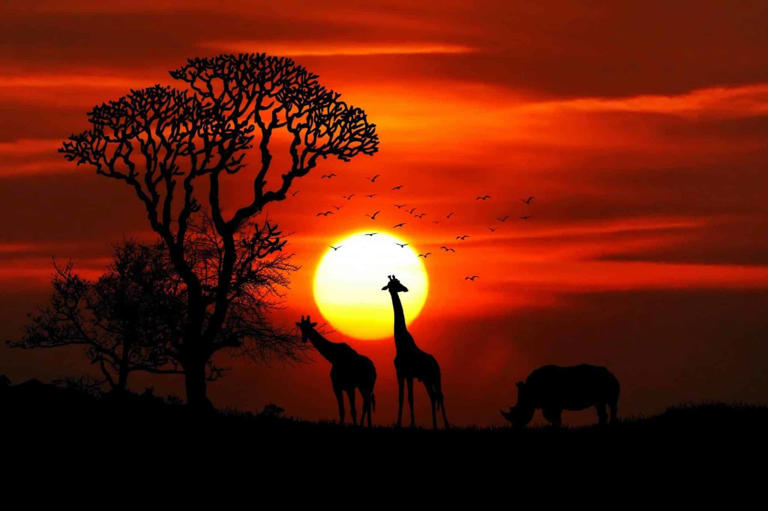
- Cast & crew
Thabo and the Rhino Case

Thabo (11) wants to become a private detective. If only his home, the small African village, was not the most peaceful Savannah paradise. But things take a sudden turn when a rhino is murder... Read all Thabo (11) wants to become a private detective. If only his home, the small African village, was not the most peaceful Savannah paradise. But things take a sudden turn when a rhino is murdered in the safari park for its horn. Thabo (11) wants to become a private detective. If only his home, the small African village, was not the most peaceful Savannah paradise. But things take a sudden turn when a rhino is murdered in the safari park for its horn.
- Mara Eibl-Eibesfeldt
- Ursula Gruber
- Martin Gypkens
- Litlhohonolofatso Litlhakayane
- Ava Skuratowski
- Kumkani Pilonti
- 9 Critic reviews

- Aunt Agatha
- (as Nhlakanipho Lindokuhle Manqele)
- Inspector Gwebu
- (as Zimkhitha Letlotlo)
- Mr. Winterbottom
- Mrs. Modiba

- Sipho Godbless
- All cast & crew
- Production, box office & more at IMDbPro
Movies Directed by Women in 2024

More like this

User reviews
- May 3, 2024 (United States)
- Safari Detective
- South Africa
- Desert Flower Filmproduktion
- See more company credits at IMDbPro
Technical specs
- Runtime 1 hour 37 minutes
Related news
Contribute to this page.

- See more gaps
- Learn more about contributing
More to explore

Recently viewed

IMAGES
COMMENTS
Welcome to Rhino Africa. At Rhino Africa, we're guided by our love and passion for Africa. And now, our glorious continent is more ready than ever to welcome you with open arms. As the World's Best Safari Company, our African Travel Experts can't wait to start planning your tailor-made luxury safari! Travel with the best. Travel with Rhino Africa.
Celebrate World Rhino Day with a conservation based tour. Connect with the local community in the Mother City of Cape Town, embark on a rhino conservation mission in KwaZulu-Natal and end off your journey on a rhino safari in the Sabi Sand Game Reserve, housed by South Africa's wildlife mecca, the Kruger National Park. Best time to go:
Come share our passion for Africa's people and wildlife through Rhino Africa's conservation and community upliftment projects. We offer a range of African safari experiences - from Big 5 safaris, romantic honeymoons to luxury train travel & gorilla-trekking - tailor-made for you.
About. Rhino Africa Safaris is Africa's Leading Safari Company for 6 years running. We specialise in luxury, tailor-made itineraries to Southern and East Africa and Indian Ocean Islands. Our team of travel experts have extensive first-hand knowledge of all the top premier destinations, hotels and lodges. Cape Town Central, South Africa.
Come share our passion for Africa's people and wildlife through Rhino Africa's conservation and community upliftment projects. Africa's Most Awarded Safari Company. Excellent. 4,798 reviews on. Experience Africa's grandeur with Rhino Africa's bespoke luxury safaris featuring wildlife sightings, opulent accommodations, and personalised service.
Ziwa Rhino Tours. 5. Ol Pejeta Conservancy, Kenya. Ol Pejeta, on the Laikipia Plateau below Mt Kenya, is a great place to see both southern white rhino (introduced from South Africa) and the endangered black rhino. It is also home to the last remaining northern white rhinos in Africa, a pair of cows kept safe in a large enclosure.
Kenya safari holidays offer you Africa's most classic safari experience: Great Wildebeest Migration, Big 5 and the fascinating Maasai culture. Book now! ... The scenery embraces mountains, forests, deserts and lakes such as Lake Victoria. At Rhino Africa, we are Kenyan safari experts and can plan a safari experience to suit your exacting ...
Walking safaris in South Africa. When it comes to walking safaris in South Africa, the options are endless. You can head to the iconic Kruger National Park and its surrounding private game reserves to smell, hear and feel the magic of the South African bush. Along with being Big 5 territory, the Kruger boasts an incredible variety of fauna ...
We're The World's Best Safari Company. With over 200,000 happy travellers since 2004, Rhino Africa's track record as the World's Best Safari Company speaks for itself. We have a wealth of experience in crafting unforgettable African safari experiences and a TrustPilot rating of 4.9/5 to prove it! Welcoming from start to finish, Image Credit ...
South Africa. Given that South Africa is home to 90% of all white rhinos, this is where you should start your search for the species. Sightings are extremely common in Kruger National Park and the surrounding reserves. Other good possibilities include Hluhluwe-iMfolozi Park and Madikwe Game Reserve, as well as numerous private reserves.
We used Janine at Rhino Africa to coordinate a pre-safari trip to Johannesburg and Victoria Falls (we'd already arranged the safari directly with the safari camp and they recommended Rhino Africa for the other parts). The trip was originally scheduled for June of 2020, but that didn't happen due to the COVID shutdown.
By Luke Lalin on. December 16, 2021. In the 2021 World Travel Awards, Rhino Africa has recently been voted as the World's Leading Safari Company for 2021. Having won Africa's Leading Safari Company for a record 7th time earlier this year, this new global title is a first for Rhino Africa, and we couldn't be more proud..
Rhino Africa Safaris is Africa's Leading Safari Company for 6 years running. We specialise in luxury, tailor-made itineraries to Southern and East Africa and Indian Ocean Islands. Our team of travel experts have extensive first-hand knowledge of all the top premier destinations, hotels and lodges.
Best safaris to see rhino. South Africa's Kruger National Park and surrounding private reserves are the best places to see both white and less frequently black rhino. In Namibia you can also see white rhino, and sometimes black rhino, in Etosha National Park. In East Africa, Tanzania is one of the best places to see rhino, particularly inside ...
Rhino Africa: Safari Excellence Since 2004. Rhino Africa came to fruition 20 years ago, humbly born around David's kitchen table. However, things have changed drastically since then, as we've now, two decades later, cemented ourselves as the World's Most Awarded Luxury Safari Company. But this doesn't give full context to what really drives our ...
Rhino Safari Guide. Wandering elegantly across the savannahs of Africa, rhinoceroses are the emblem of the wilderness. They move with an elegance and grace that contrasts their prehistoric frames and unquestionable power. Horns pointing skyward, faces cloaked in emotion, these are special animals that truly take the breath away.
The official blog of Rhino Africa - the World's Best Safari Company. Discover all things Africa with our Africa travel experts. Search. Destinations. Botswana; Indian Ocean Islands; Kenya; Malawi; Mozambique; Namibia; ... Taking to the Seas for Rhino Africa's 20th Birthday Extravaganza. Taking to the Seas for Rhino Africa's 20th Birthday ...
While the southern black rhino and south western black rhino are out of immediate danger for the moment, the East Africa black rhino in Tanzania's numbers are declining. The north western black rhino has been declared extinct in 2011. As the rhino populations sadly decline, you should move heaven and earth to see this amazing animal in the ...
October 13, 2023. As remarkable and mysterious as our continent is, it's only natural that there will be FAQs about African safaris. And at Rhino Africa, we're all about embracing this wild side and leading you through your rabbit hole of peculiar ponderings. So, let's delve into some of the most common queries and sprinkle a bit of zest into ...
Rhino Africa Safaris is a travel company founded on a passion for Africa. Founded in 2004 we have rapidly become Africa's leading online tour operator. At Rhino Africa Safaris, we are passionate about the people, places and landscapes in Africa and are committed to responsibly promote and arrange travel to, within and from Africa.
A BIG 5 WILDERNESS RESERVE. Rhino Ridge Safari Lodge is proud to be associated with the Hluhluwe-Imfolozi Park and its historical success story of rhino conservation in Southern Africa. We are honoured to call the "home of the rhino" our home too. We are the first luxury safari lodge to be established within this world renowned Big 5 game ...
Both Rhino species can be hunted, however the Black Rhino hunting permits requirements are much stricter than those of the White Rhino. When booking a rhino hunt, it is of utmost importance to book with an outfitter that has a good reputation and who specialises in big game hunting. Somerby Safaris conducts rhino hunting in pristine, large ...
White rhino populations in South Africa declined from 15,625 at the end of 2017 to 12,968 at the end of 2021, the lowest population since pre-2005. More than half of these are privately owned. While the country's white rhinos accounted for 86.5% of Africa's population in 2017, this has declined to 81.3% in 2021.
An African safari is an epic trip for those who love animals. ... Some lodges inside private reserves, like Shindzela or Rhino River Lodge, can cost around $250 per person per night. Read next
A safari (Swahili: journey) in one of Africa's national parks is an exciting thing: many people can observe a larger number of wild animals and even have the oppurtunity to see the famous Big 5 of ...
The elephant began to emerge about 60 million years ago in Africa. The first elephantids were small but the group became wildly successful, eventually occupying much of Eurasia in addition to Africa, and then North America. As the Homo genus started to emerge much later, elephants had grown huge. Preying on them became key to our own evolution.
Thabo and the Rhino Case: Directed by Mara Eibl-Eibesfeldt. With Litlhohonolofatso Litlhakayane, Ava Skuratowski, Kumkani Pilonti, Nissi Bodibe. Thabo (11) wants to become a private detective. If only his home, the small African village, was not the most peaceful Savannah paradise. But things take a sudden turn when a rhino is murdered in the safari park for its horn.